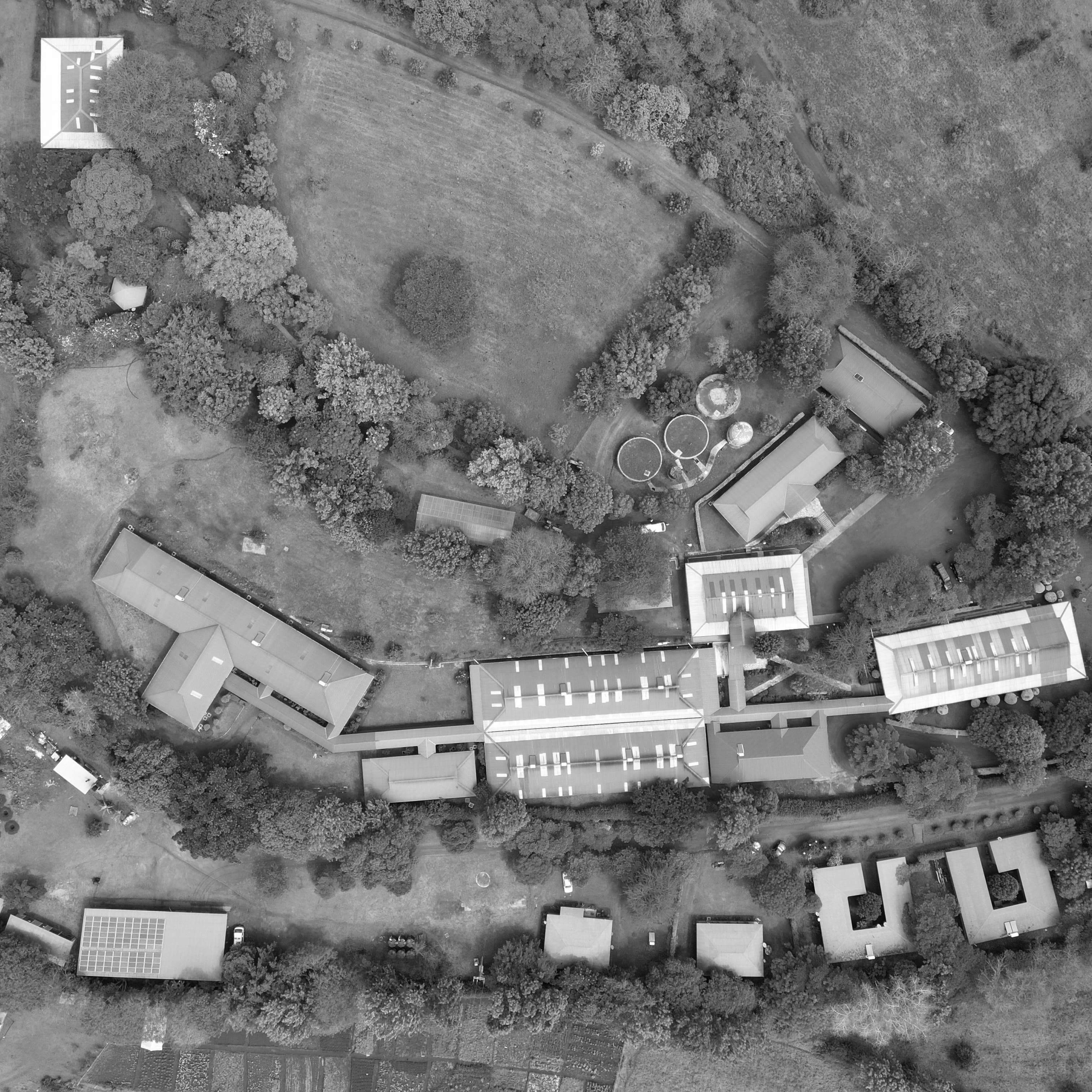
FAME CAMPUS TIMELINE
Using Generative AI to Reconstruct a Medical Campus's History
How I turned a single drone photograph into an interactive timeline showing 18 years of growth for a medical organization serving rural Tanzania
Role: Designer & Developer
Client: Foundation for African Medicine & Education (FAME)
Timeline: 3 weeks (concept to deployment)
Tools: Photoshop Generative AI, Figma, Squarespace
At a Glance
An interactive visual timeline showing 18 years of growth for FAME's medical campus in rural Tanzania. Using a single drone photograph and Photoshop's generative AI, the project reconstructed how the campus evolved from 2006-2024, creating a compelling storytelling tool that directly connects infrastructure growth to expanded healthcare capacity.
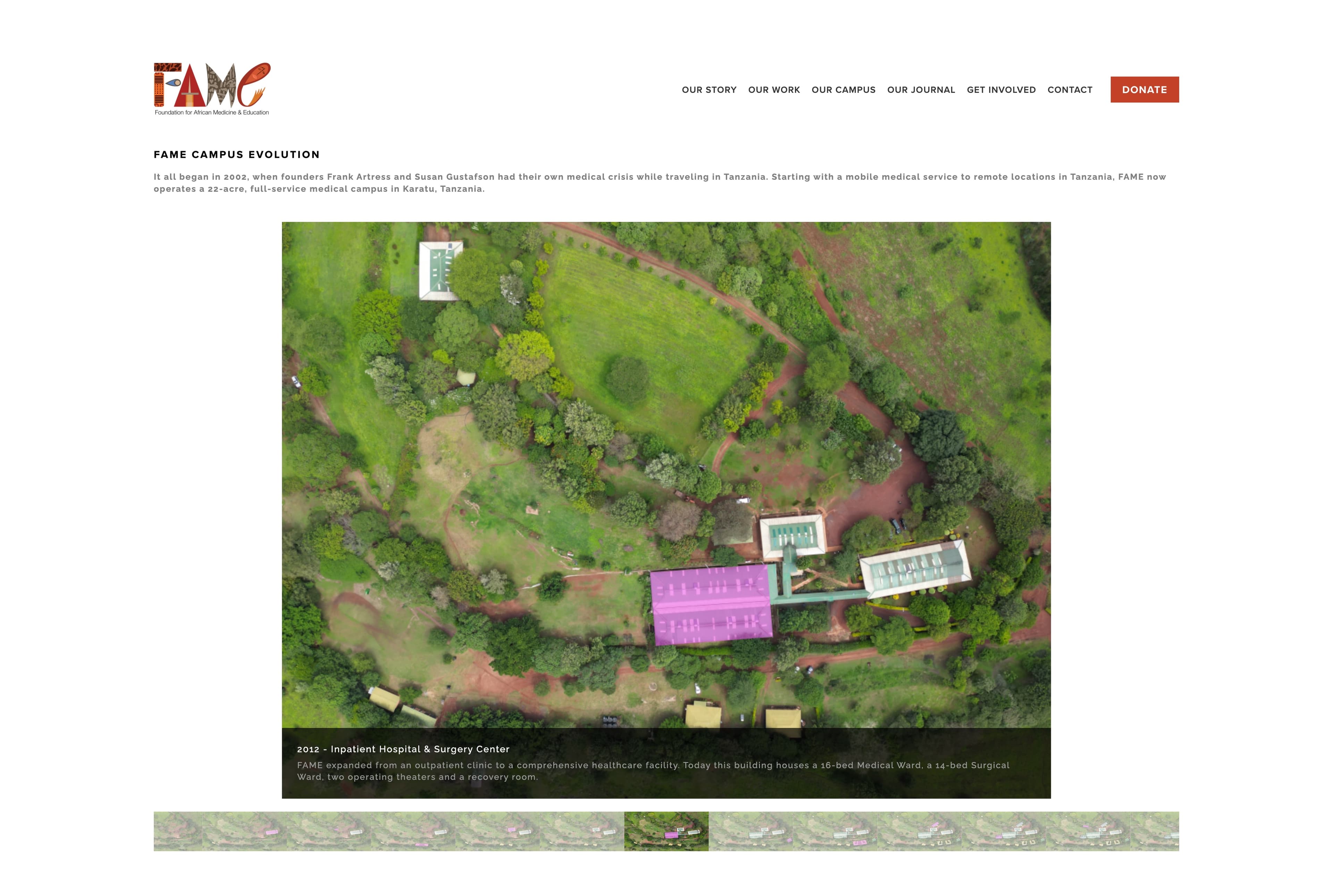
THE CHALLENGE
Operating in rural northern Tanzania, FAME (the Foundation for African Medicine and Education) provides essential healthcare through its medical facilities, community outreach, and professional training programs. As they've expanded their services over the years, they've built a campus that reflects their growing impact in the region.
The challenge was to find a compelling way to showcase this journey. Using a single drone photograph of their campus in Karatu, Tanzania, we needed to create an interactive timeline that would allow donors, stakeholders, and the public to witness how each new development expanded FAME's ability to serve their community.
FAME'S IMPACT
Operating a state-of-the-art hospital in rural northern Tanzania, FAME serves a region that was severely under-resourced:
- 27,000+ patient visits annually
- Serves 250,000 people in the Karatu District
- Before FAME: only 3 doctors for 240,000 people
- Now employs 170 local staff including 14 doctors and 55 nurses
- 24 inpatient beds, 2 operating theaters, emergency room
- 428+ surgical procedures annually
- Founded in 2002, starting as a mobile clinic operating from a truck
- Now one of the best hospitals in Tanzania
Every building on that campus represents expanded capacity to serve one of Tanzania's most vulnerable communities.
THE MISSION BEHIND FAME NEEDED A VISUAL REFERENCE
FAME approached me hoping to provide a more visual element to the story behind their medical campus. The website had a thorough bank of information regarding their mission and 15 years of growth. The site also supplied a selection of images and videos that captured the on-the-ground work of their medical team, but needed a way to encapsulate their whole story in an easy-to-digest page.
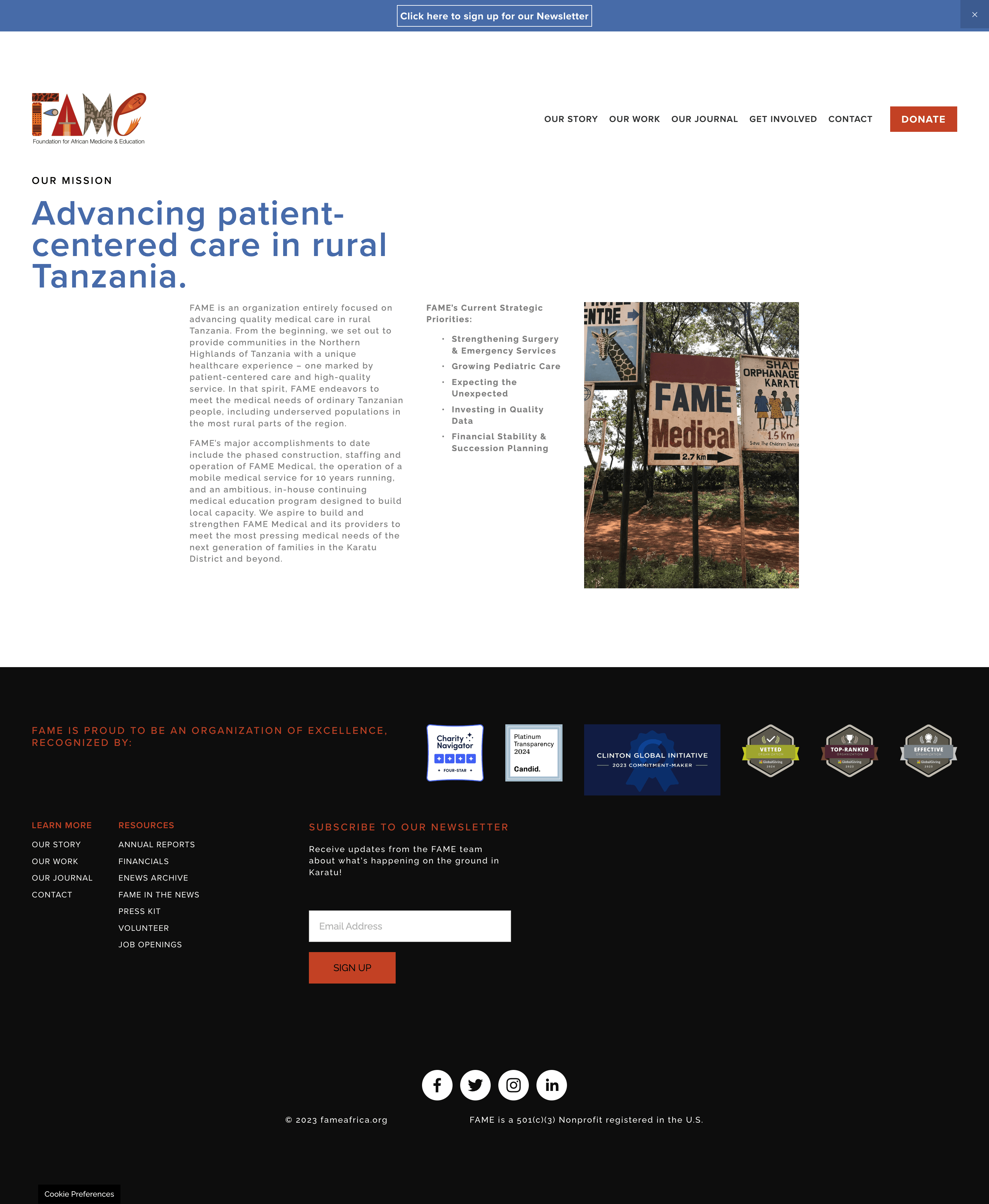
FAME's website provided comprehensive information about their mission and work, but lacked a unified visual narrative showing campus evolution.
TIMELINE CONTENDER
One contender for a succinct overview of FAME's work was their timeline page. While it did establish a temporal element to the FAME story, this feature still did not ground the reader visually in the story behind the campus.
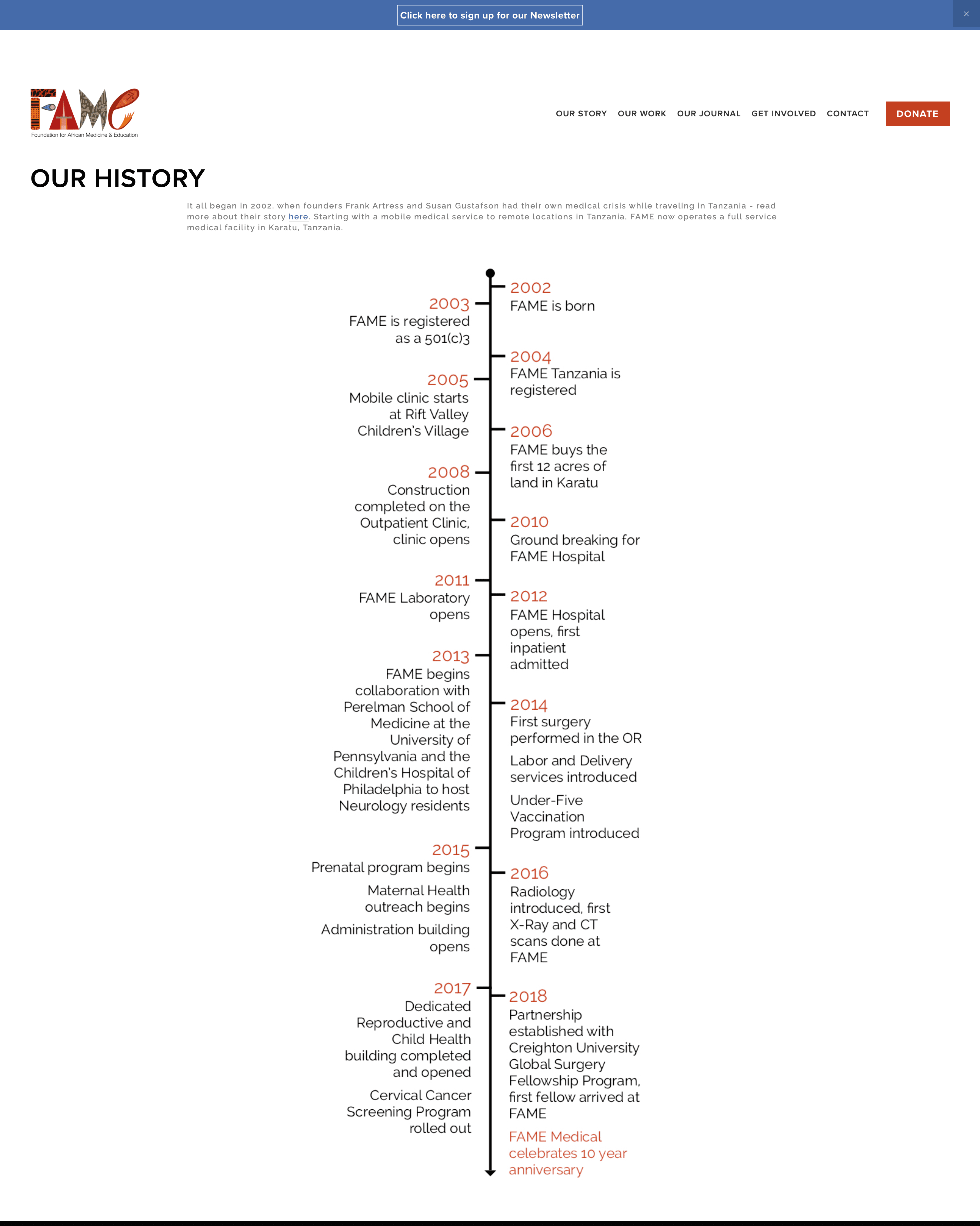
The existing timeline established chronology but didn't provide the visual grounding needed to understand the physical campus evolution.
A TOP-DOWN APPROACH
To represent the history of FAME's campus visually, we floated several possibilities:
- An interactive 3D model with a time slider
- Compiling Google Earth imagery from different years using their timelapse feature and highlighting the differences
- Using a top-down drone photo, then "deconstructing" the campus by removing features in the order they were constructed, ordering these edited photos by year in a gallery
OPTION 1: 3D MODEL ❌
Pros:
- Visually engaging experience for users
- Would allow FAME to show stakeholders and potential investors specific angles and time points
- Professional, polished presentation
Cons:
- Immense technical effort
- Integration issues with Squarespace
- Requires specialized 3D modeling software
- Maintenance complexity for updates
Verdict: Technical load ultimately proved this option unrealistic.
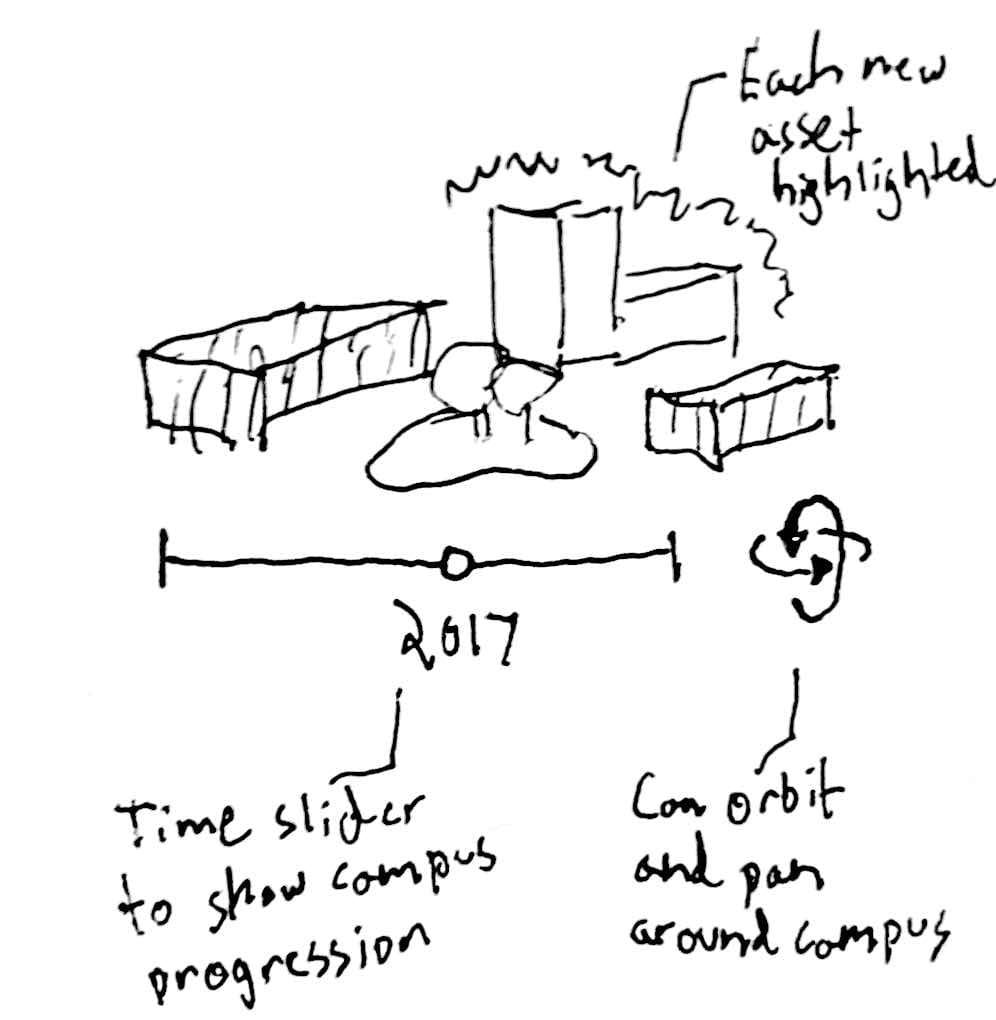
3D model concept would have been visually impressive but technically unfeasible given constraints and platform limitations.
OPTION 2: GOOGLE EARTH IMAGERY ❌
Pros:
- Relative ease of implementation
- Would show actual historical satellite data
- Free, accessible imagery source
Cons:
- Lack of specific years aligning with campus assets
- Image blurriness at needed resolution
- Possible copyright issues
- Incomplete coverage of timeline
Verdict: These limitations would lead to an incomplete visual story while potentially opening up legal risks.
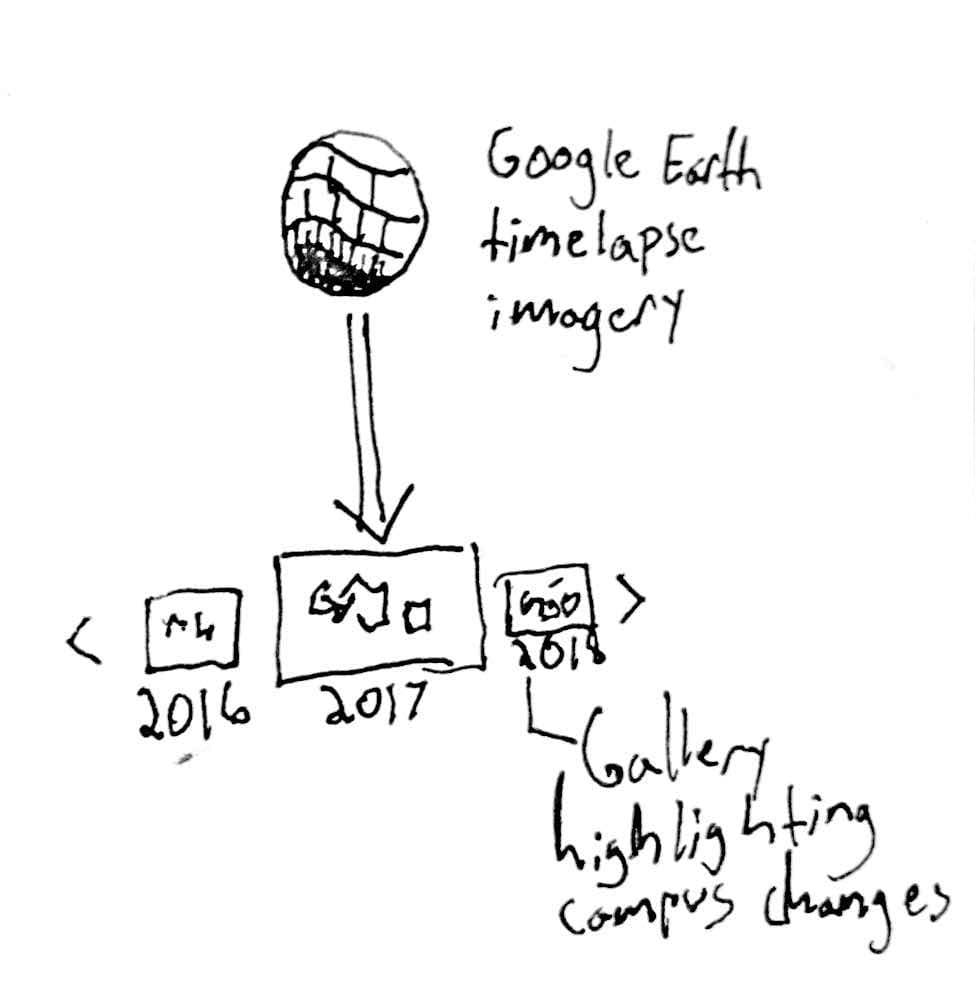
Google Earth timelapse offered some historical data but lacked the resolution, temporal specificity, and legal clarity needed.
OPTION 3: DRONE PHOTO DECONSTRUCTION
✓ SELECTEDPros:
- Relative ease of implementation
- High resolution drone photo allows clear presentation
- Precise temporal fidelity
- Full creative control
- No copyright concerns
Cons:
- Feasibility of removing elements needed validation
Solution: Photoshop's generative AI tool would allow for needed removals without sacrificing realism.
Verdict: Selected approach.
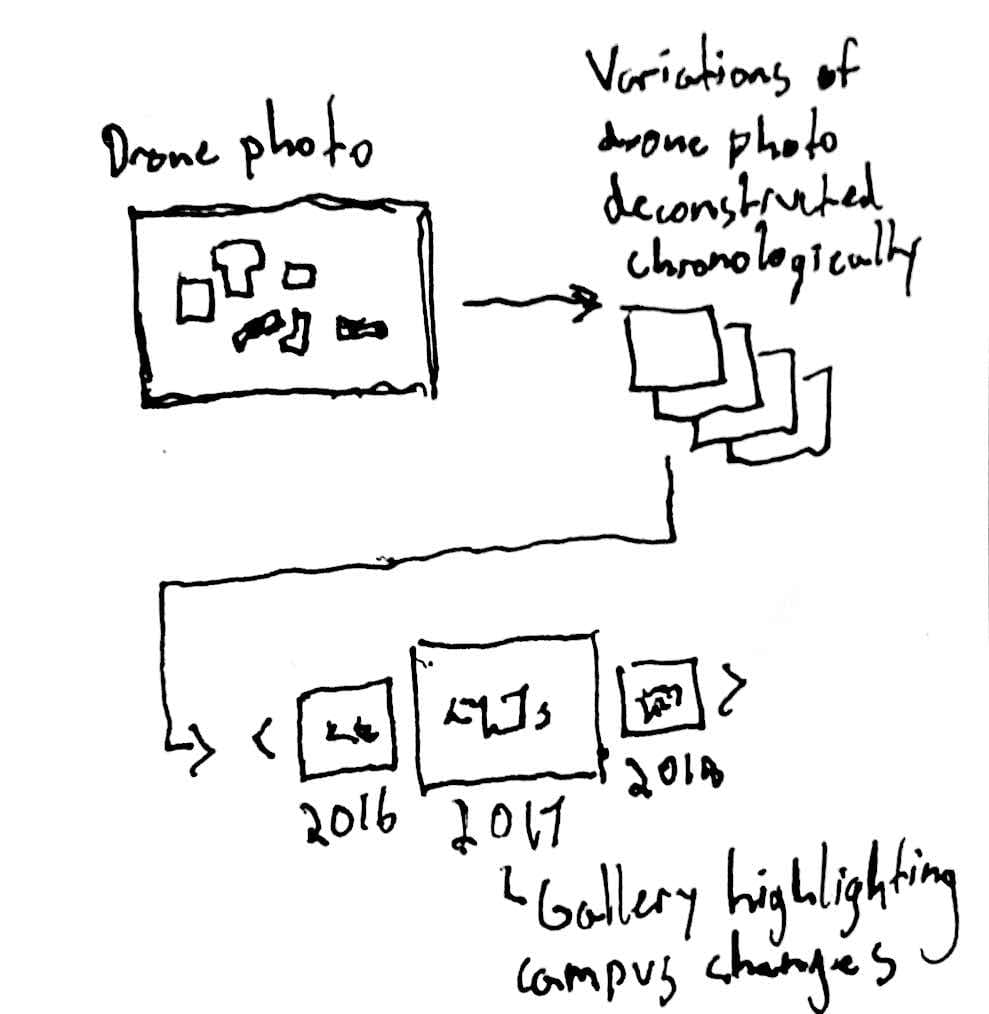
High-resolution drone photography provided the perfect foundation for temporal deconstruction.
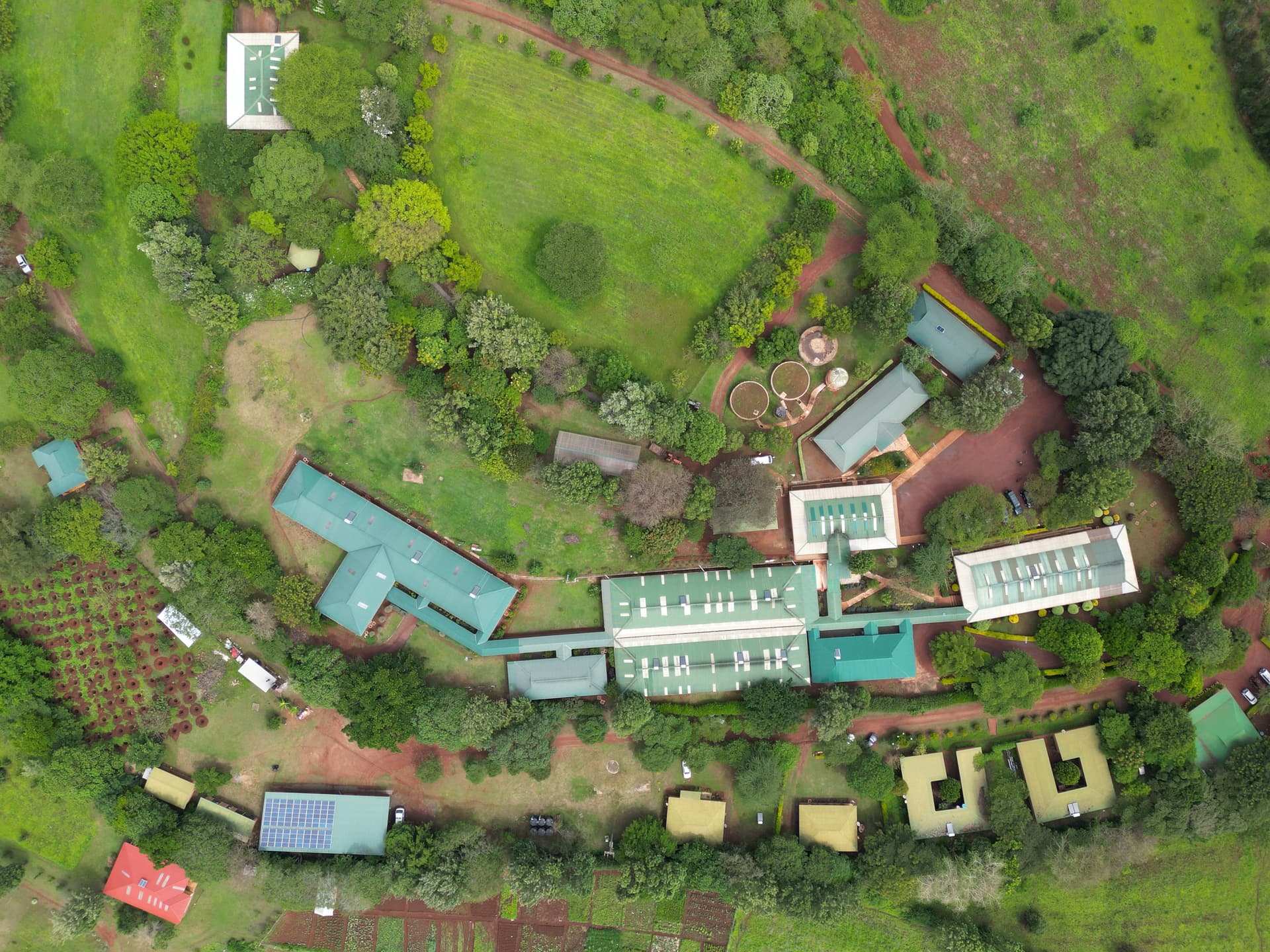
The starting point: complete FAME campus. Every building visible needed to be systematically removed to reconstruct the timeline.
PHOTOSHOP GENERATIVE TOOL
Using Photoshop, I could systematically deconstruct the FAME campus by using their generative AI tool to "erase" parts of the campus in the order in which they were built. By typing prompts like "Field", "Bush", or "Grass", the tool would replace the selected area with plausible imagery of what may have been there before construction.
The generative AI did a remarkable job creating realistic replacements that maintained visual continuity with the surrounding landscape.
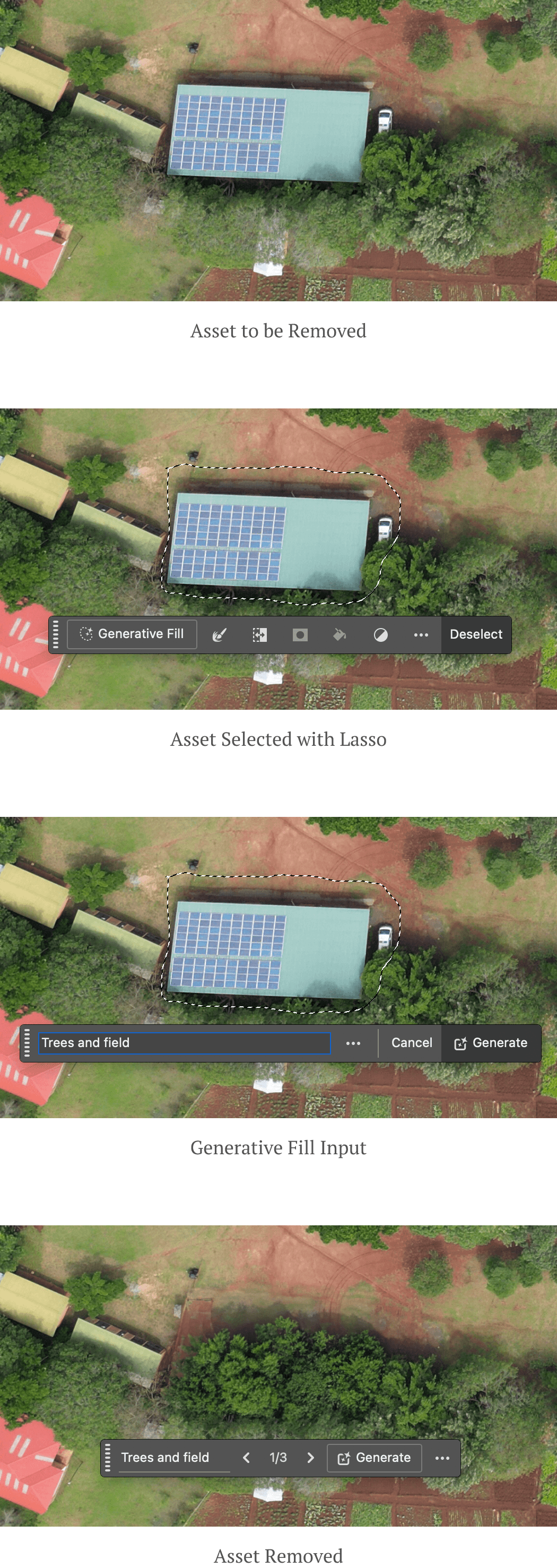
Photoshop's generative fill tool in action: selecting a building, prompting with landscape descriptors, and watching AI replace it with contextually appropriate terrain.
HOW TO PRESENT THE CHRONOLOGY
Now that the primary tool to deconstruct the campus into chronological images had been validated, the next step was to strategize the flow of the images and how each campus asset would be emphasized. I began with a hypothetical sample campus, breaking it down into what each slide would look like.
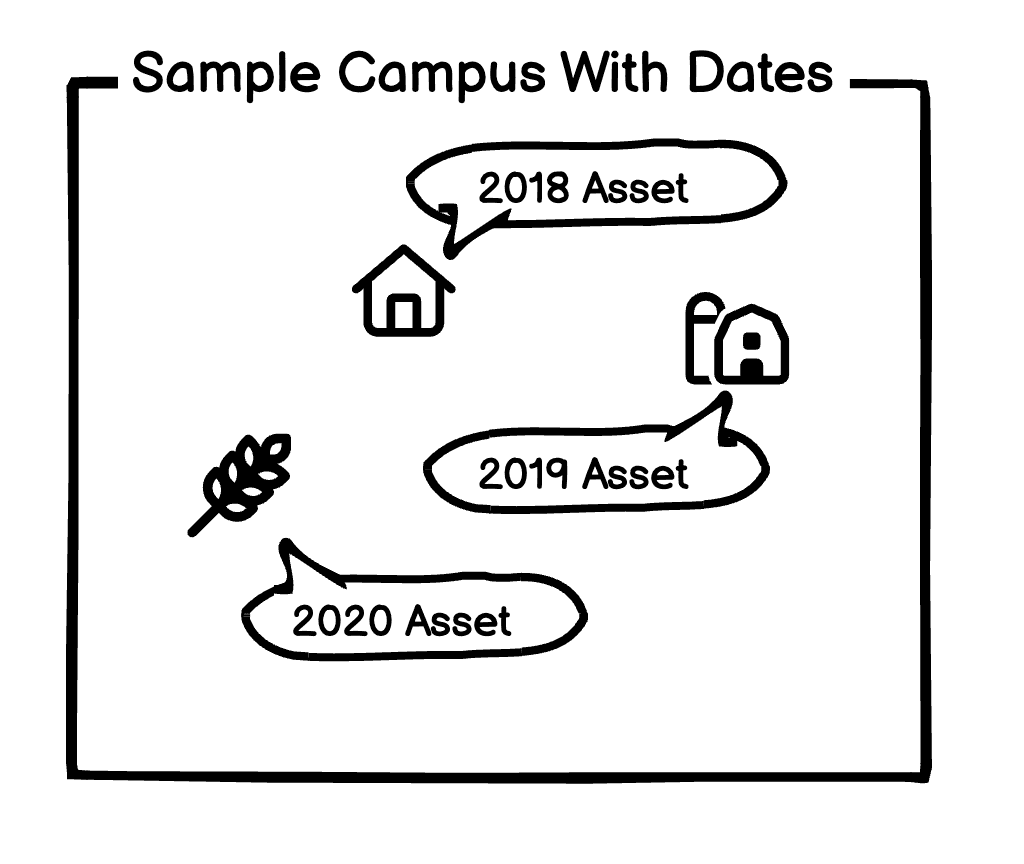
Hypothetical sample campus used to plan the deconstruction flow and highlighting strategy before applying it to FAME's actual campus.
TIMELINE FLOW
I decided that the most effective way to emphasize each new asset on the campus would be to highlight it once it has been added, coupled with a caption to provide readers with a narrative around its impact. Assets completed in the same year would still be separated into distinct steps with different captions, allowing each building to tell its own story.

Flow diagram showing how each new asset would be revealed chronologically, with highlighting and individual captions even for buildings completed in the same year.
FINAL WIREFRAME
Once I had planned the flow of the deconstructed drone images, I created a final wireframe to show what the gallery would look like, leveraging Squarespace's carousel feature.
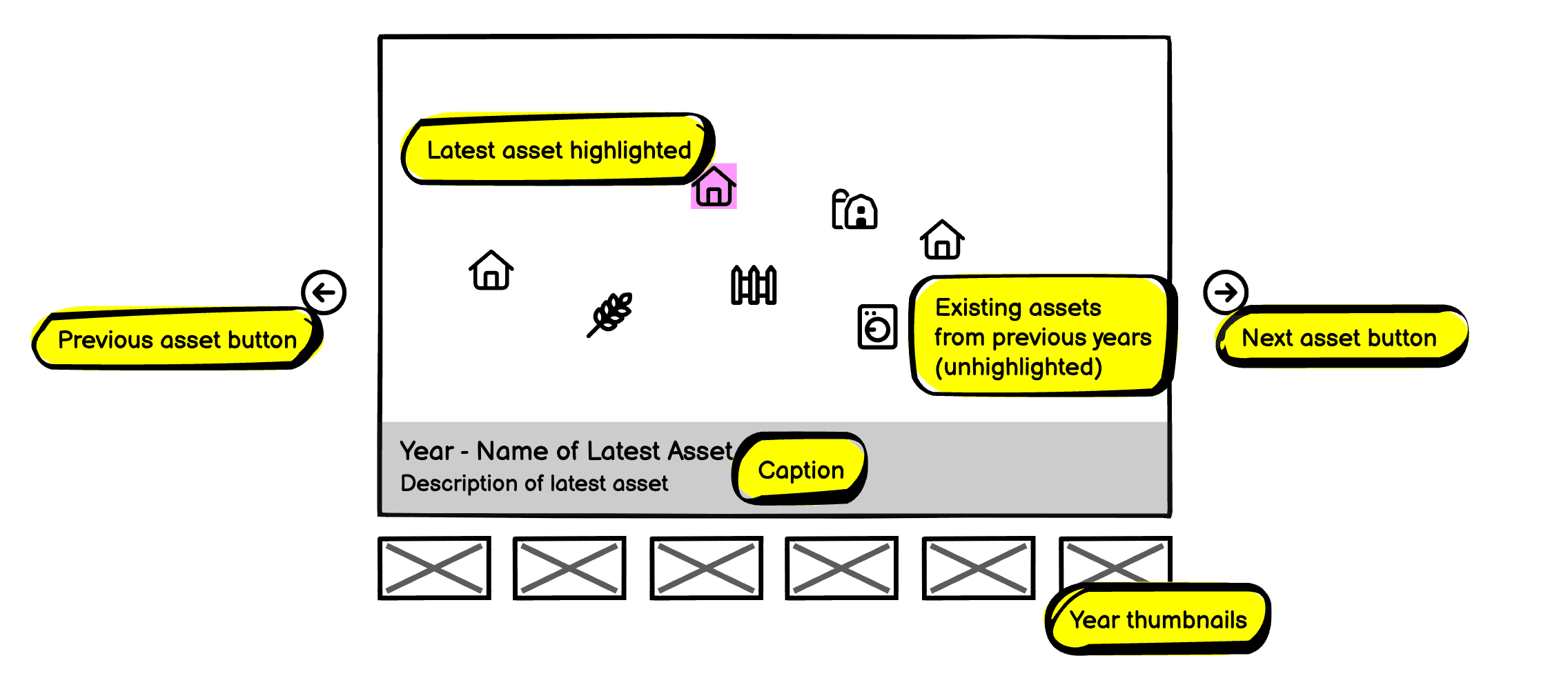
Final wireframe showing the planned Squarespace carousel implementation with image, caption overlay, and navigation controls.
BUILDING THE TIMELINE
With the approach validated and wireframes complete, I moved into production.
ASSET LABELING
To build out the final product, I began by corresponding with FAME to label the provided drone photo with each campus asset's name and the year it was completed. This mapping became the blueprint for the entire deconstruction process.
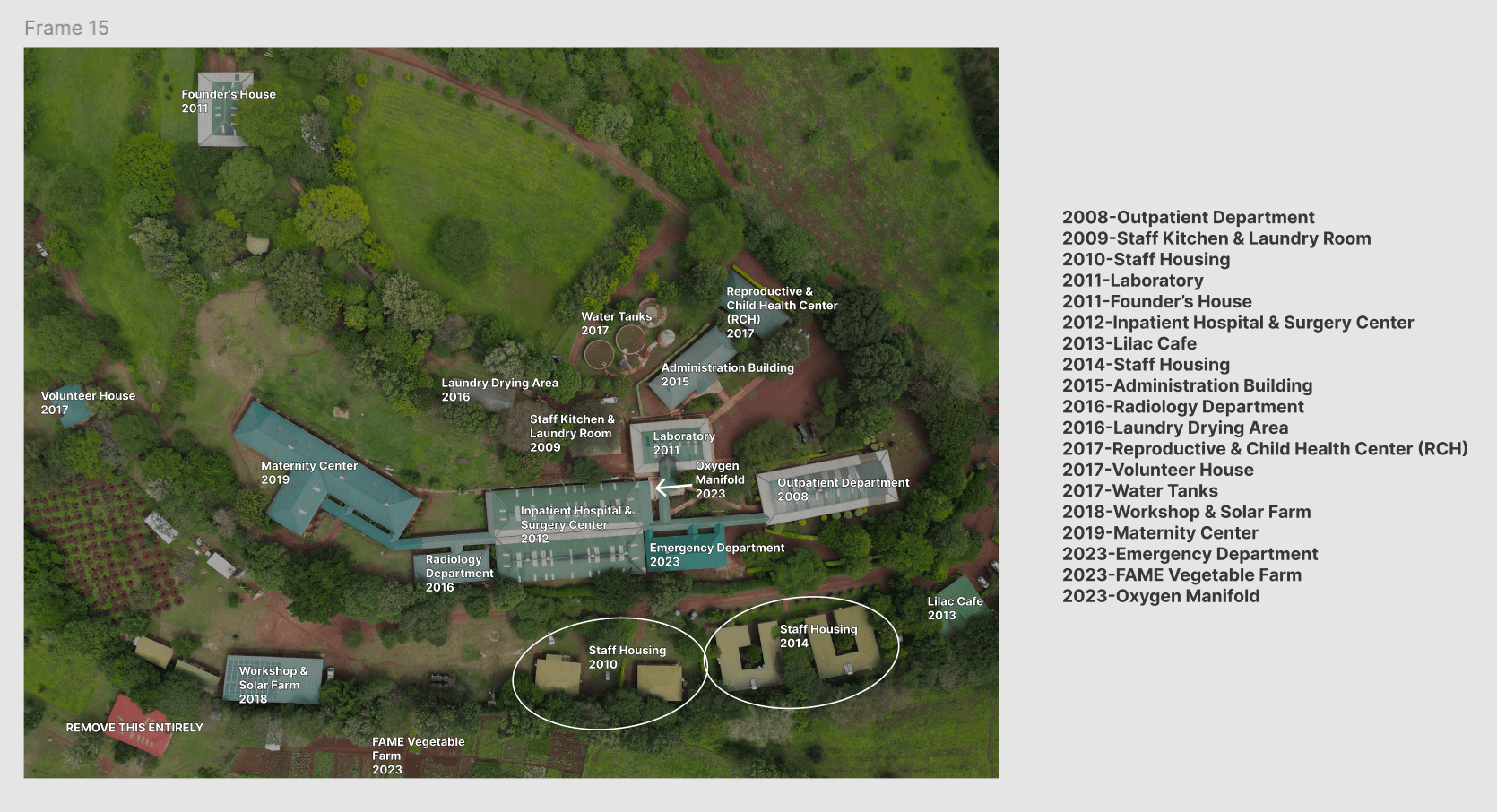
Campus asset mapping: each building labeled with name and completion year. This document guided the chronological deconstruction order.
DRONE IMAGE DECONSTRUCTION
Once I had mapped the assets to the drone photo, I executed the Photoshopping process to deconstruct the campus. There were a total of 21 images, including the campus before any assets were built and the final completed campus. Each removed building was replaced with contextually appropriate landscape using Photoshop's generative AI, maintaining visual consistency across the entire timeline.

Systematic deconstruction in progress: buildings removed in reverse chronological order, with generative AI filling in plausible pre-construction landscape.
HIGHLIGHTING EACH ASSET
Upon deconstructing the drone image and separating the images chronologically, I used Figma to highlight the new asset in each image. This visual emphasis helps viewers immediately identify what changed in that particular year. An additional unhighlighted campus image showing all completed assets would be displayed when the page first loads, providing context before diving into the timeline.
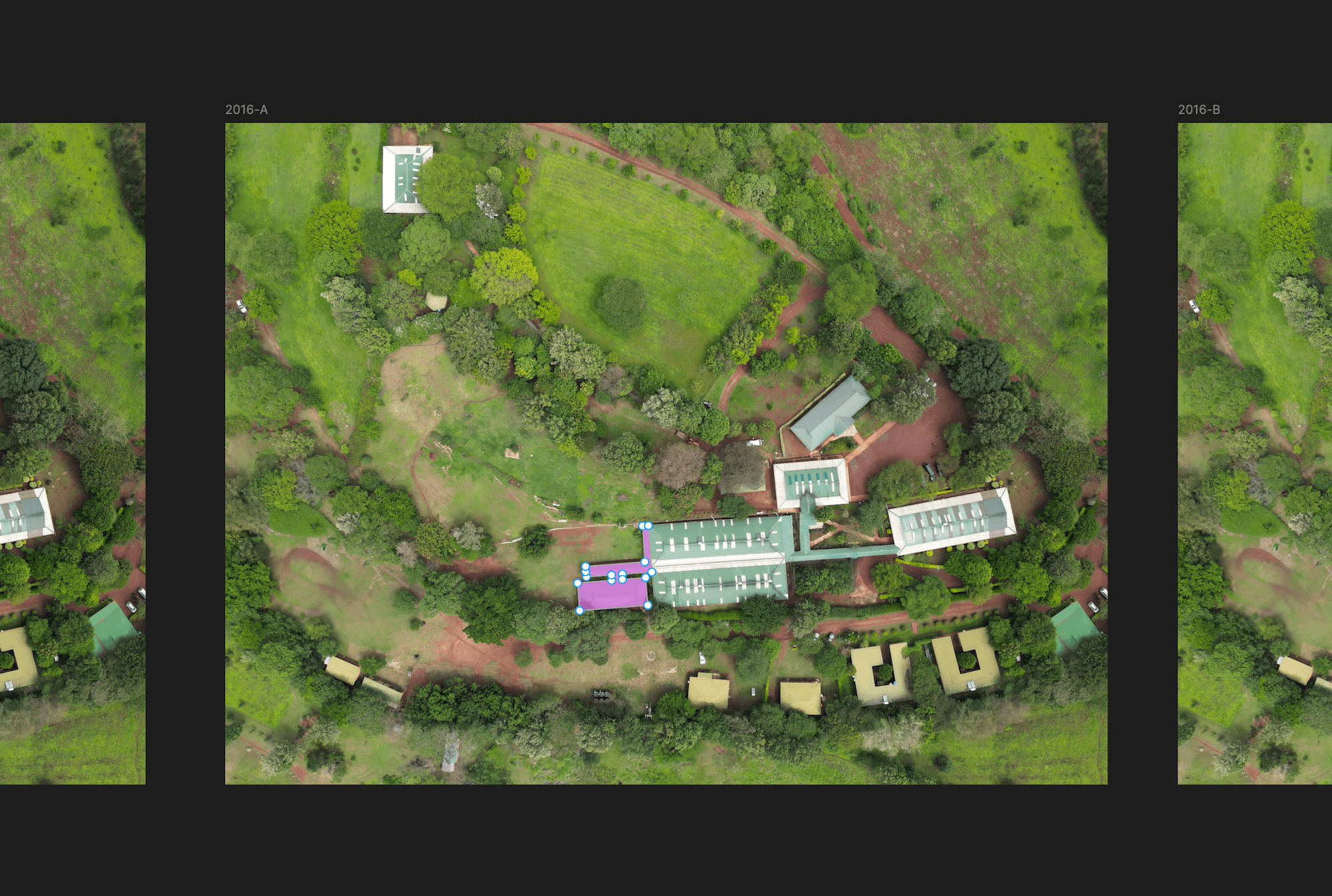
Figma workflow for highlighting new assets: each chronological image receives a colored overlay emphasizing the building added that year.
18 YEARS OF GROWTH
The completed timeline transforms a single aerial photograph into an interactive journey through FAME's expansion from an empty field to a comprehensive medical campus. Scrub through the timeline to see how each new building expanded FAME's capacity to serve the Karatu District.
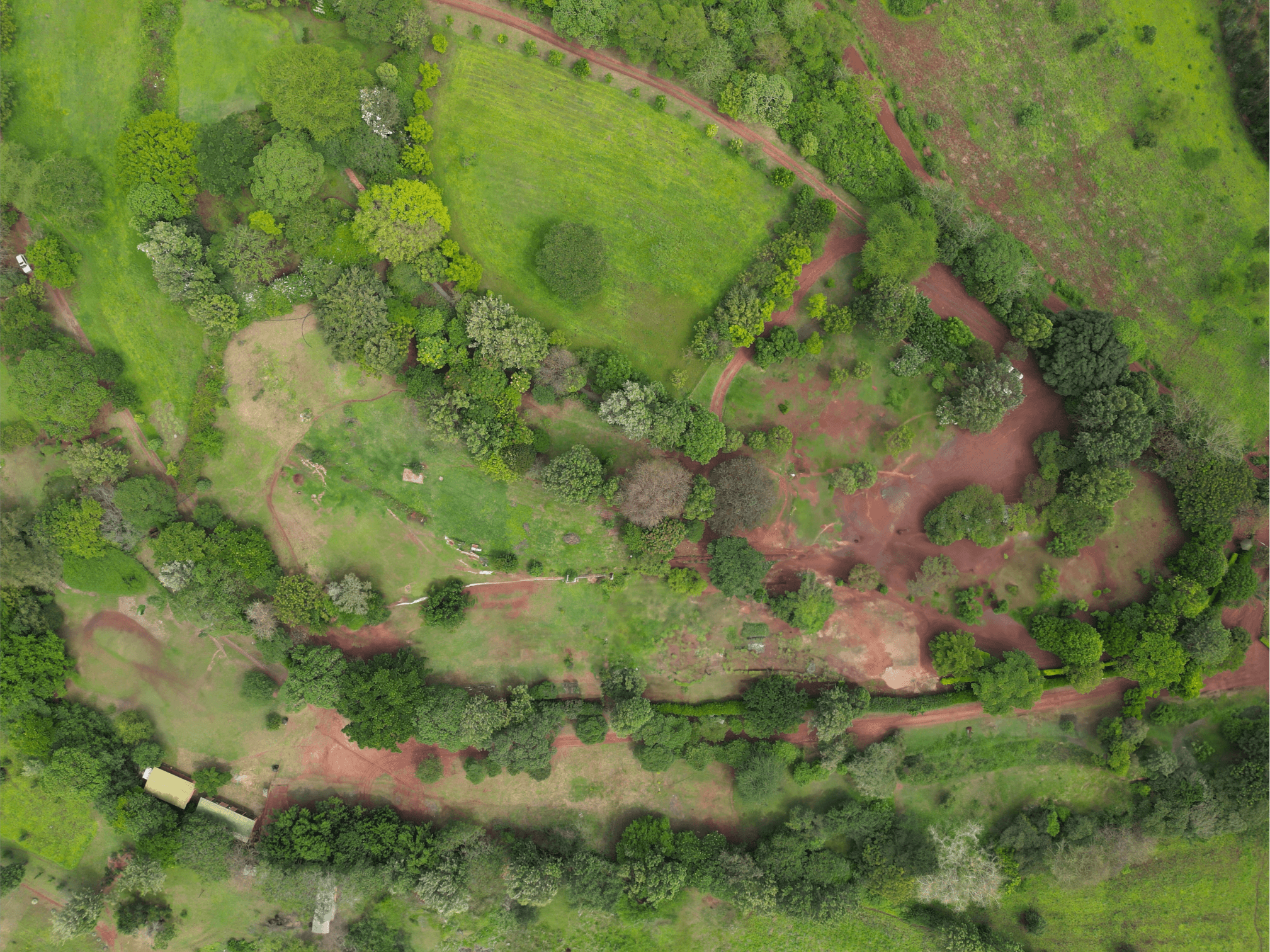
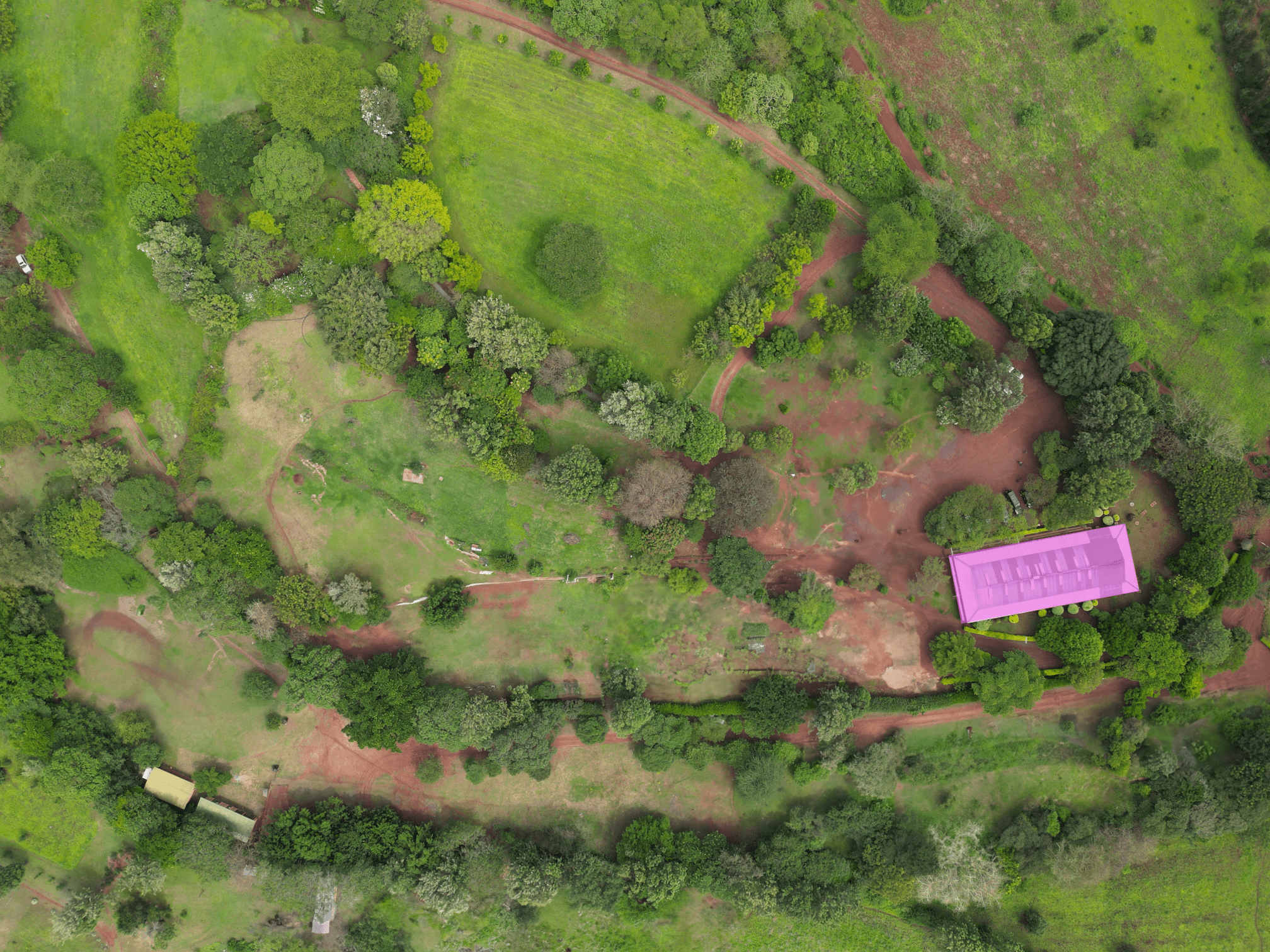
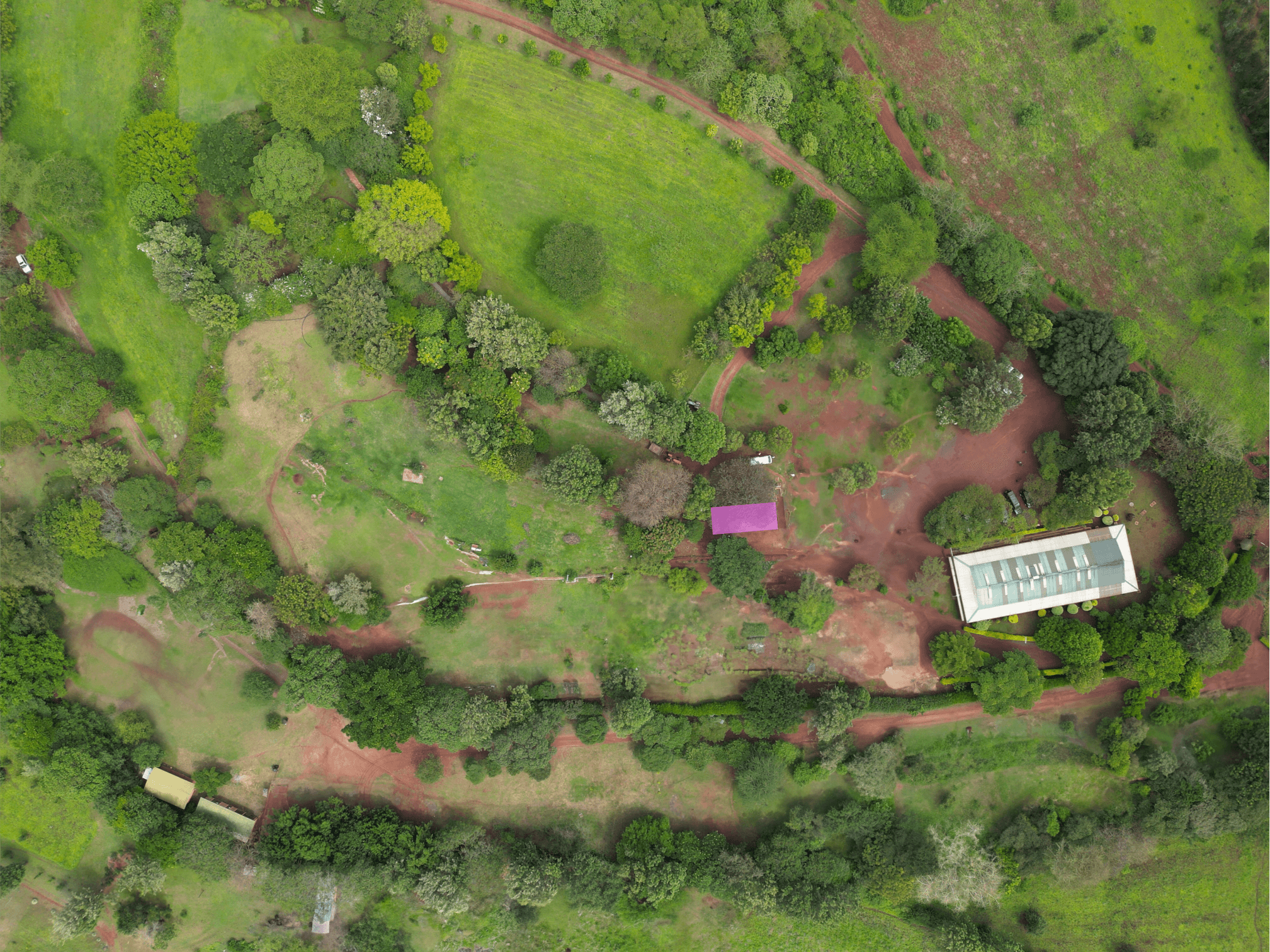
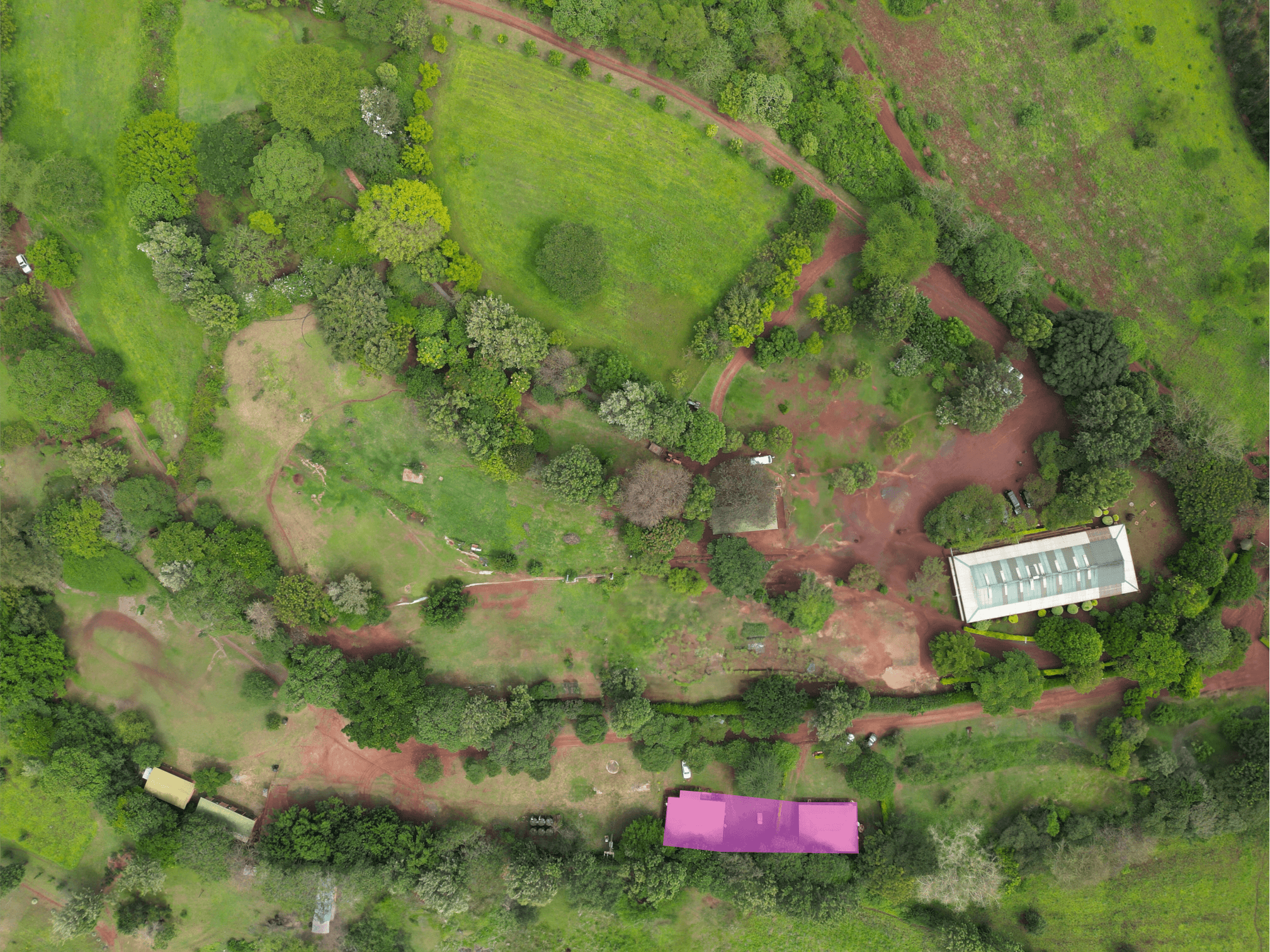
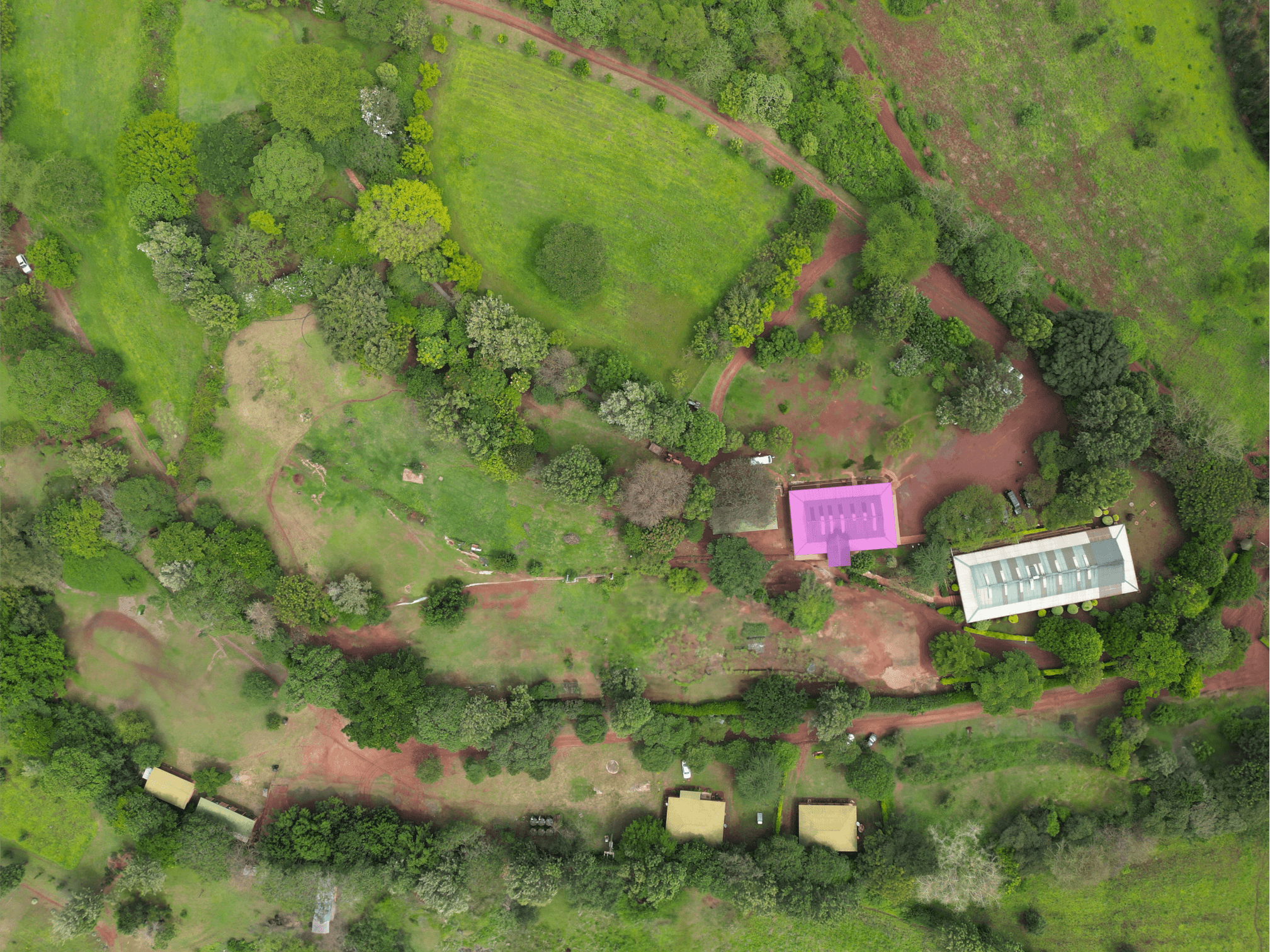
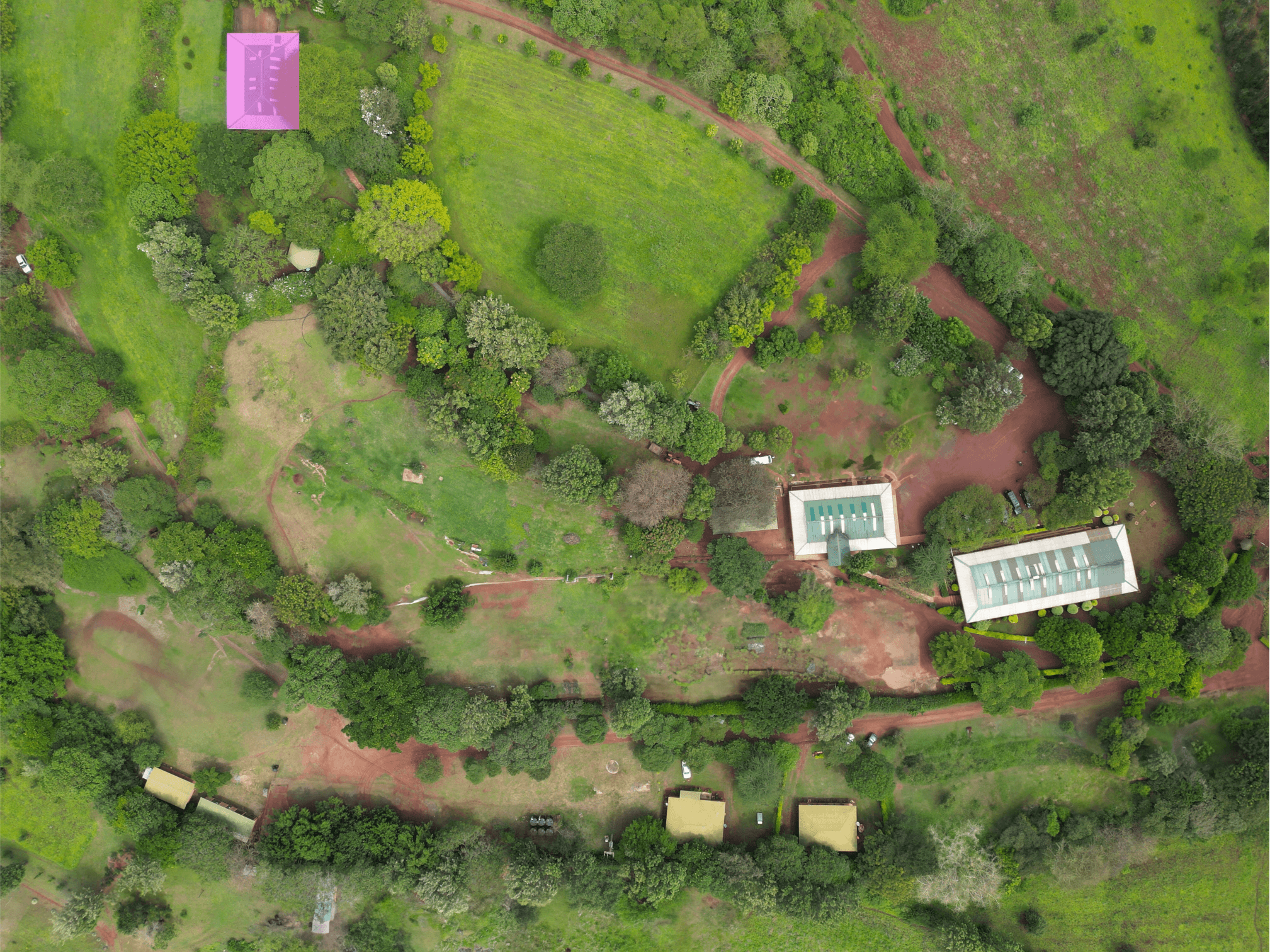
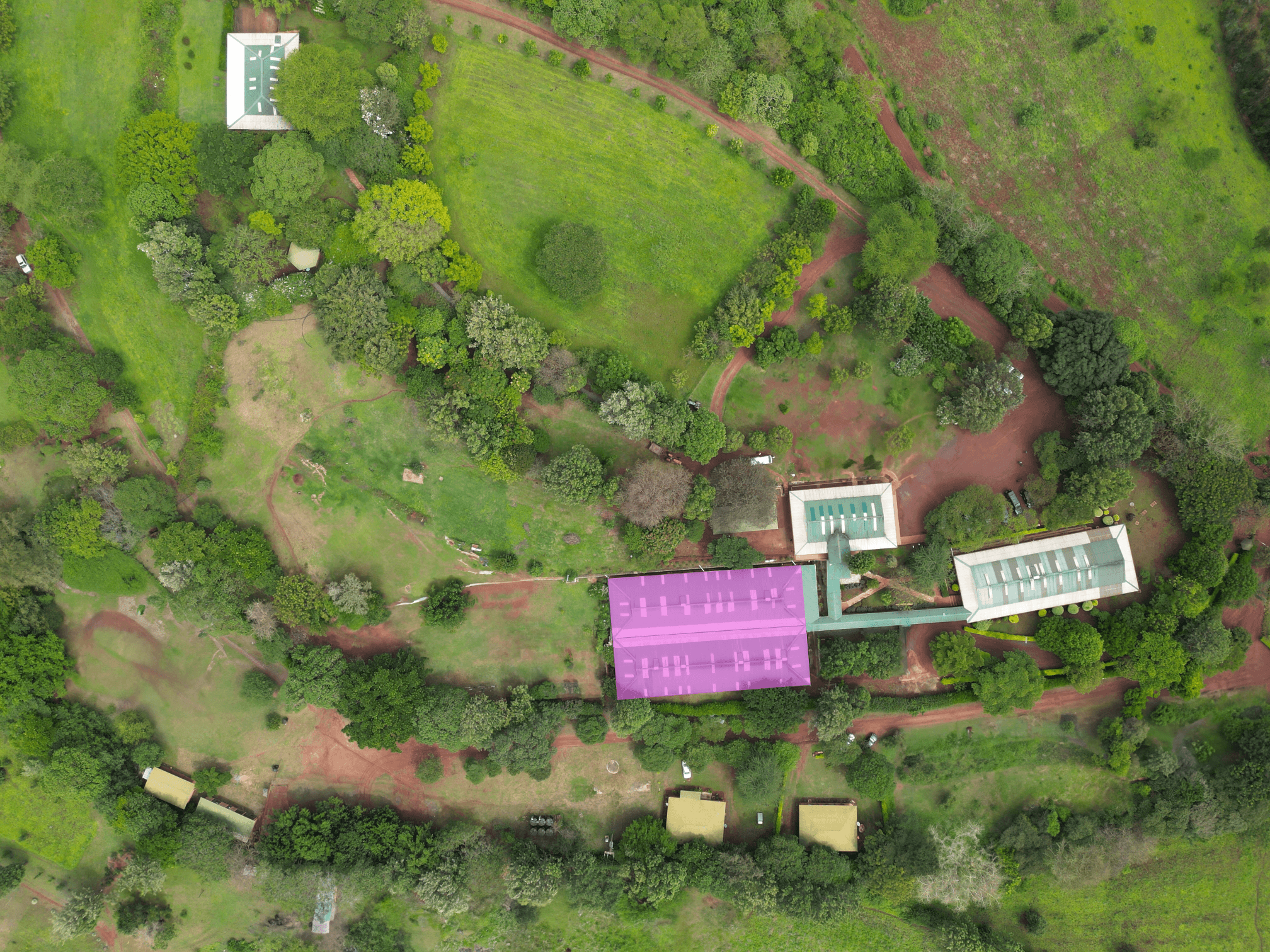
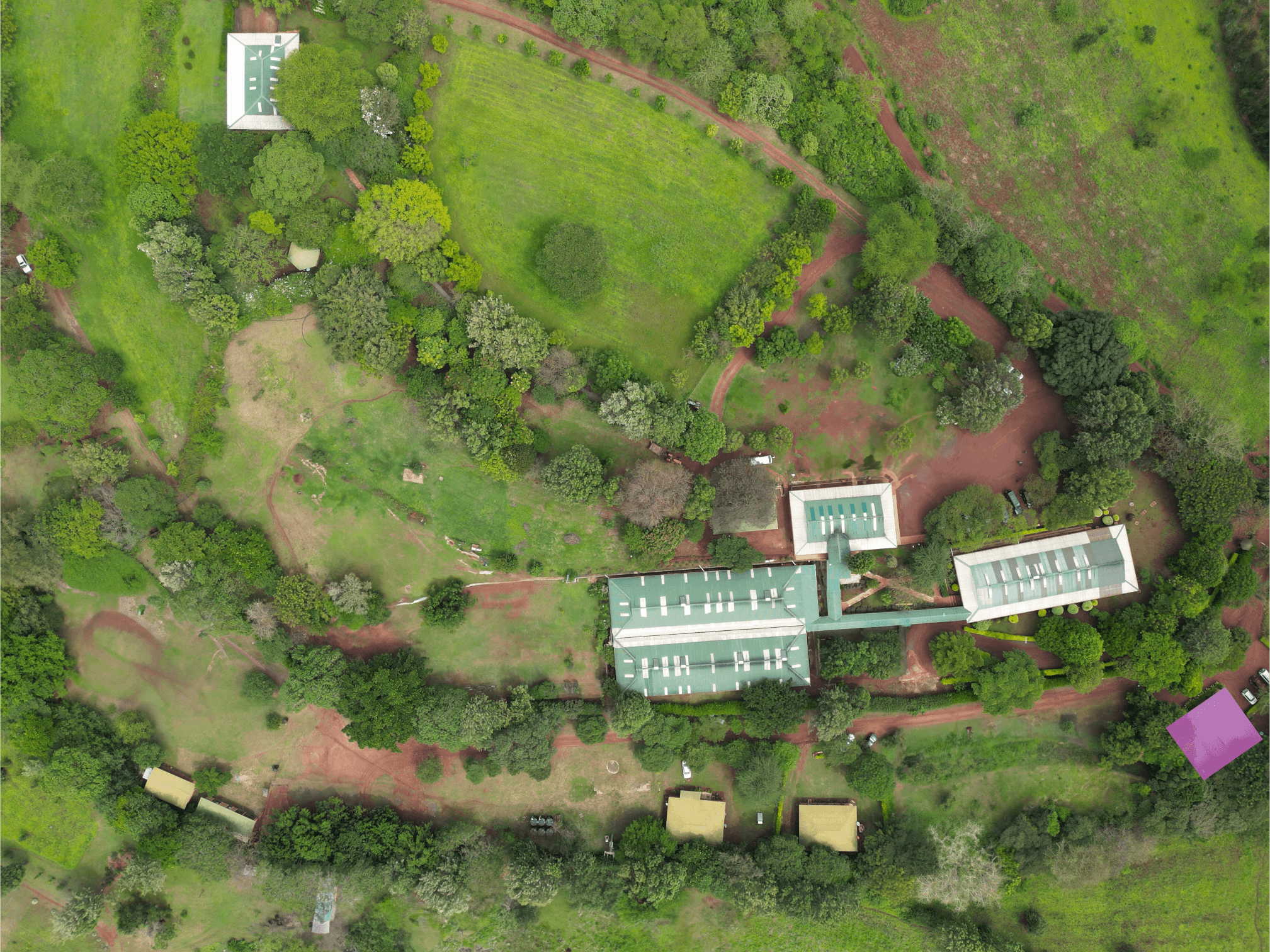
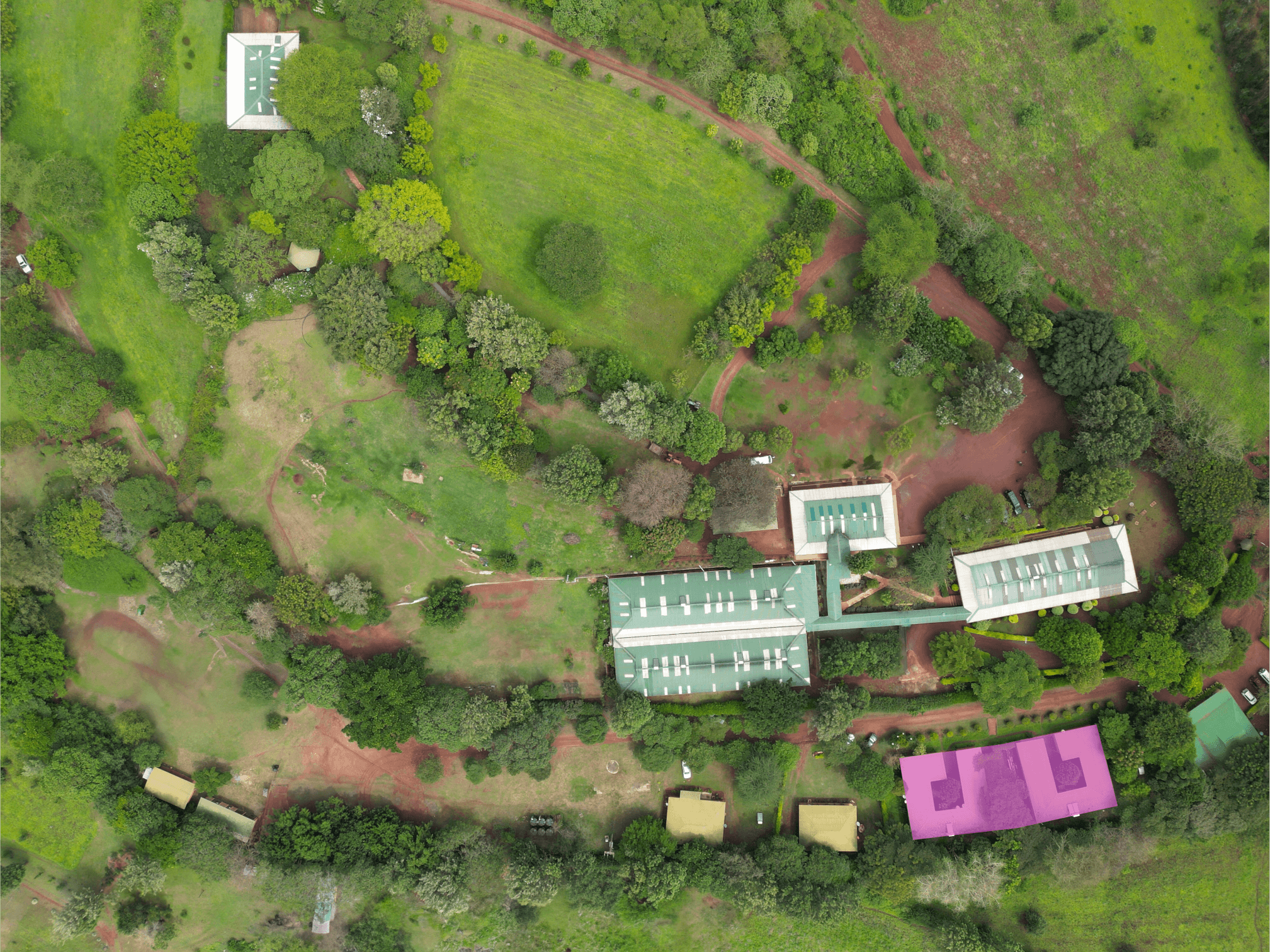
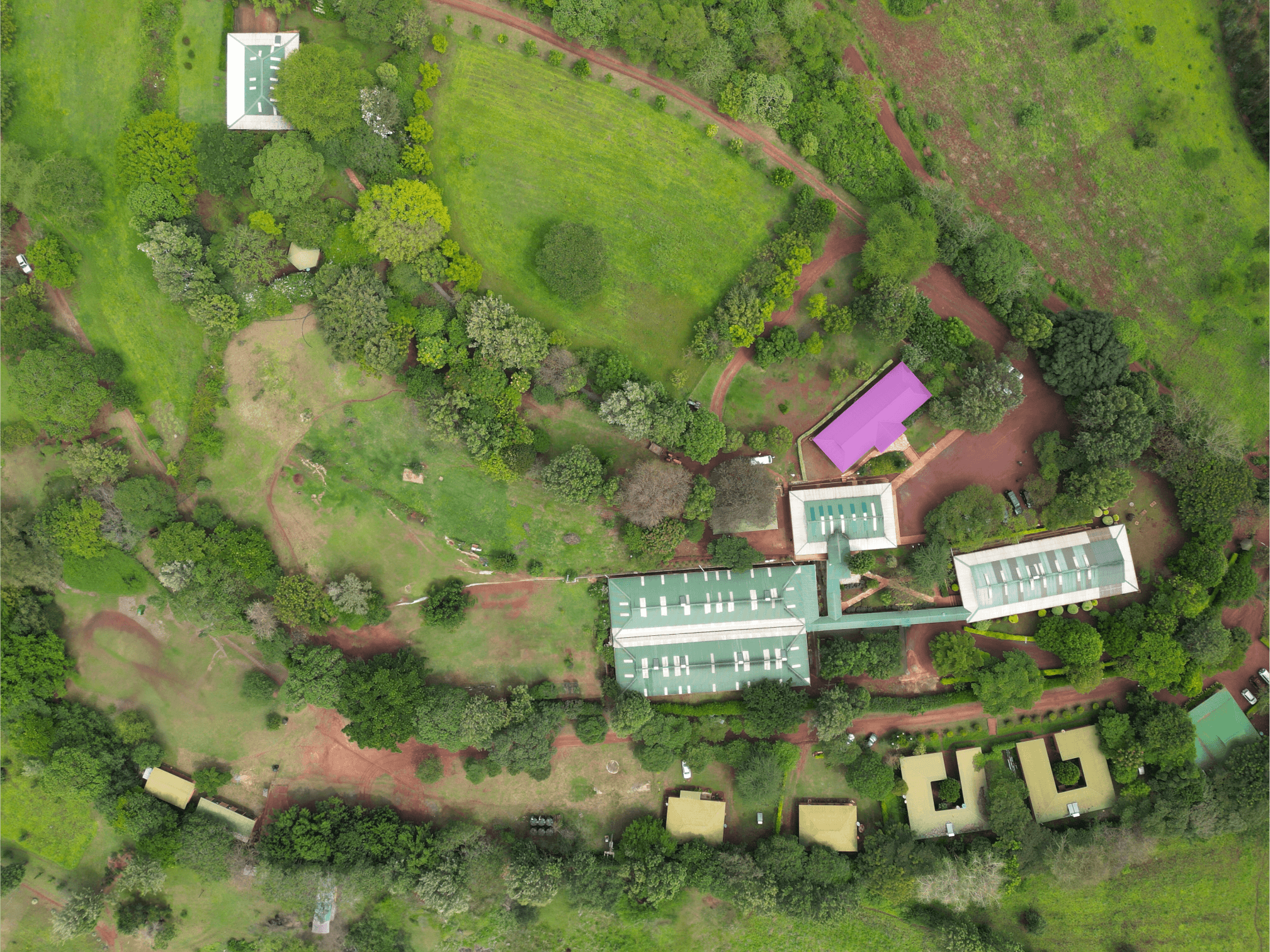
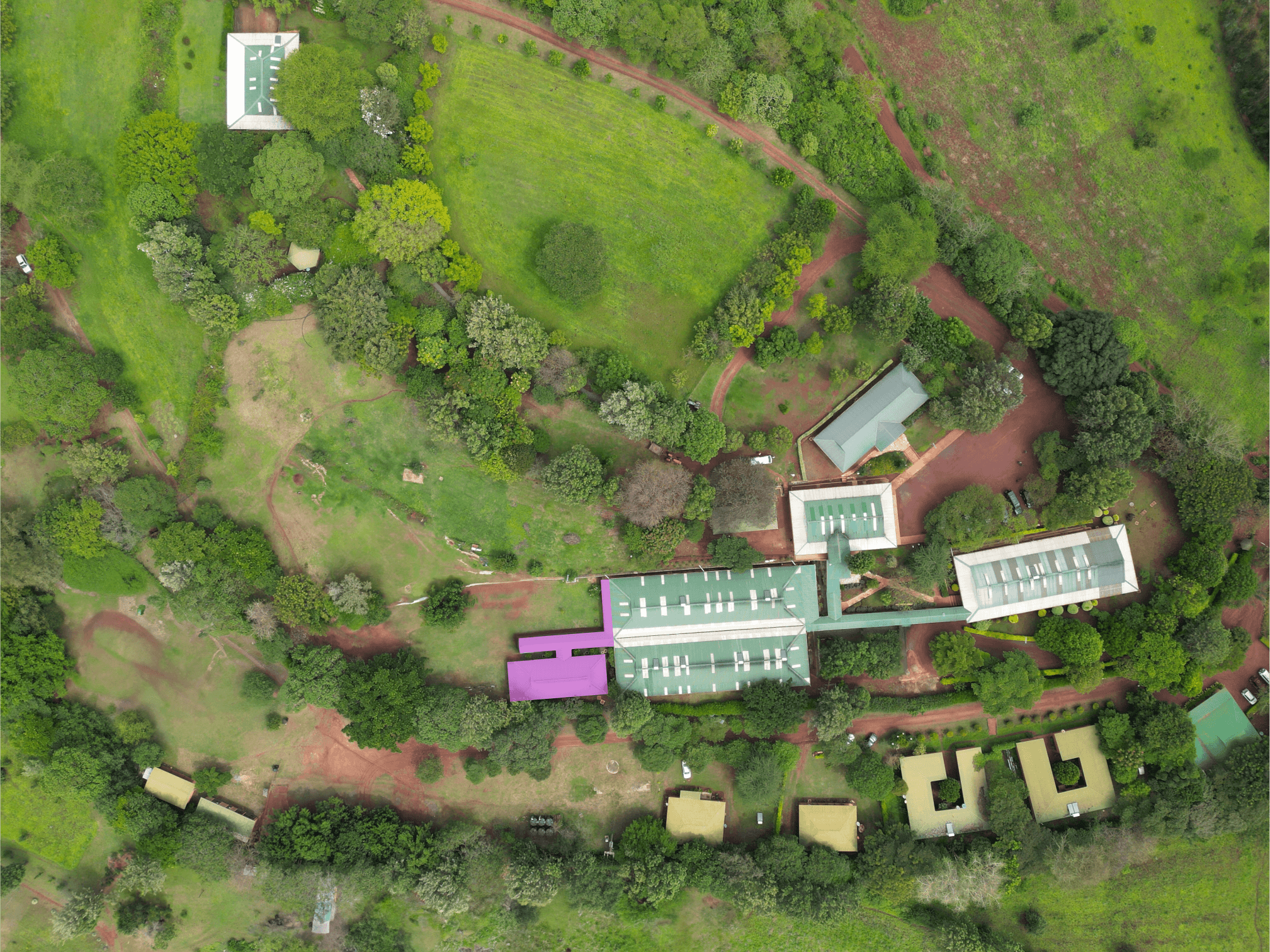
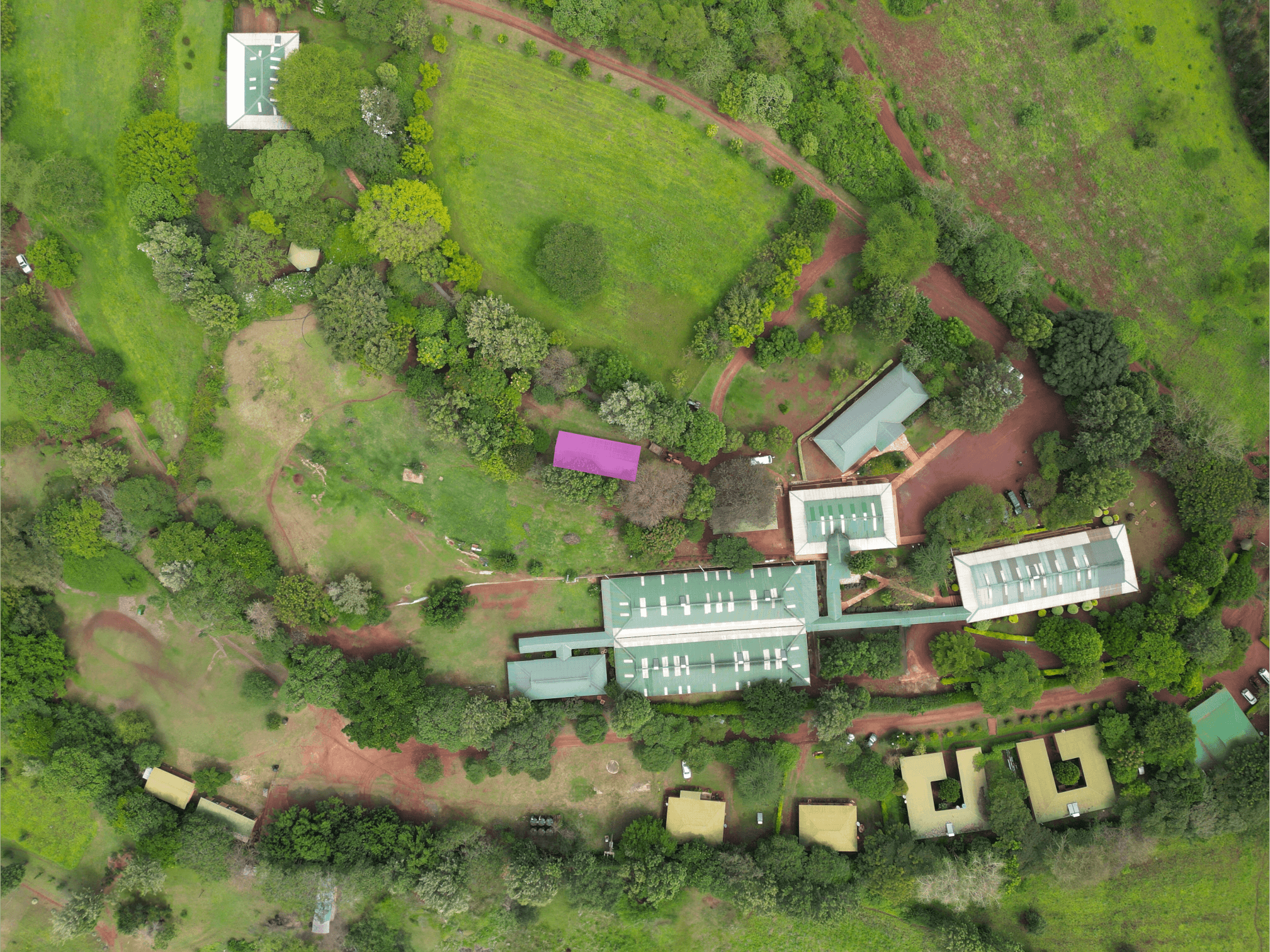
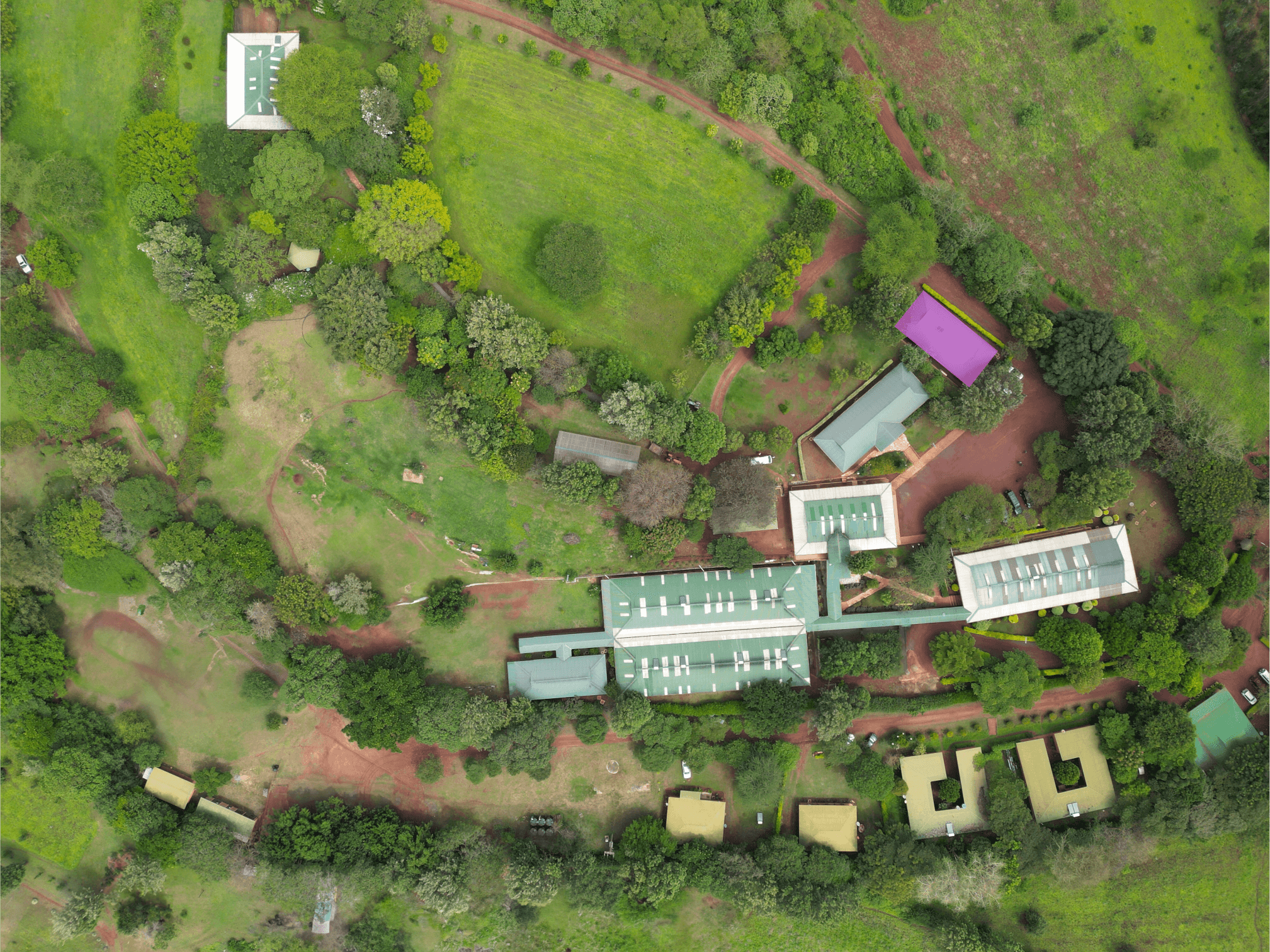
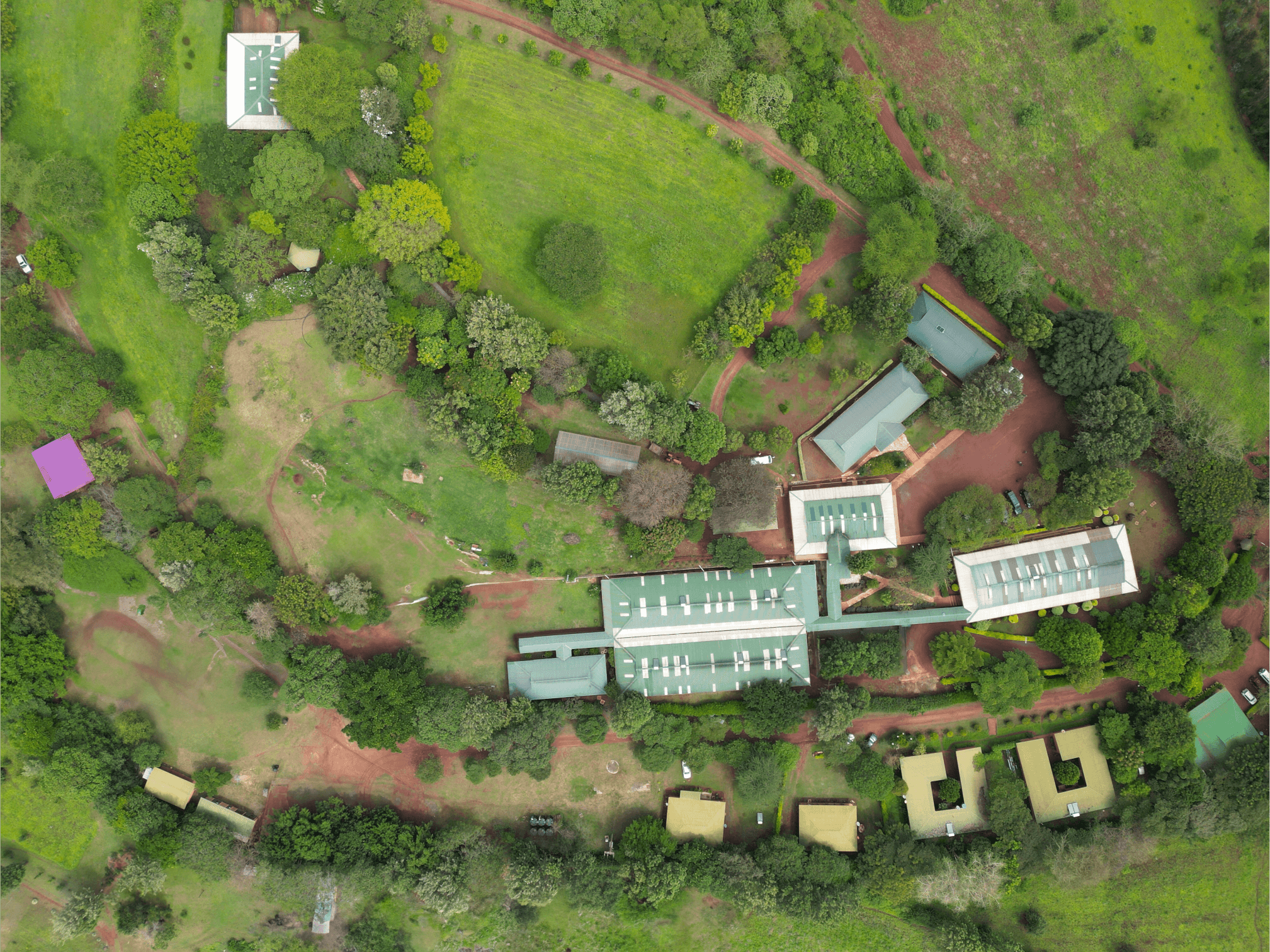
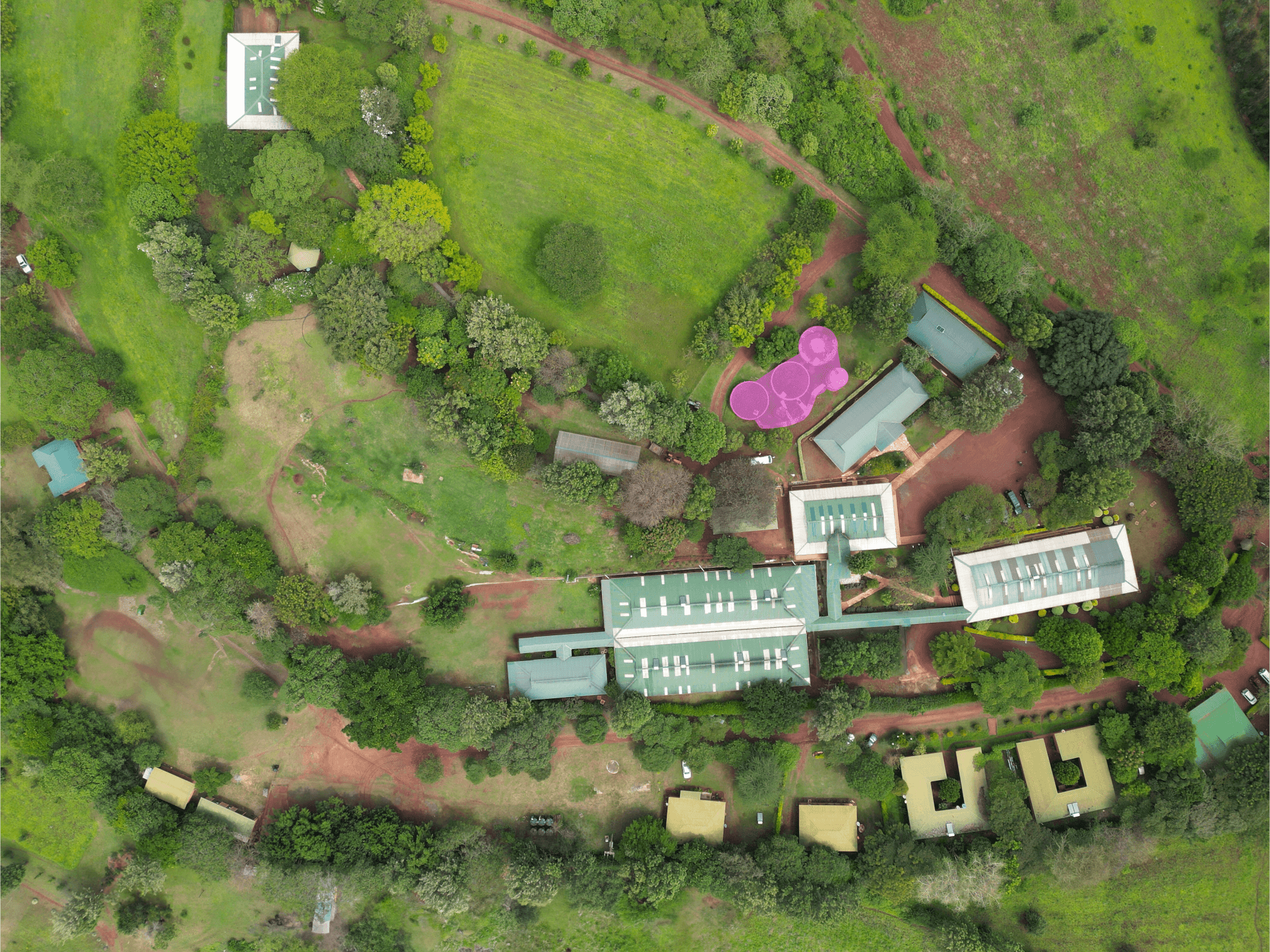
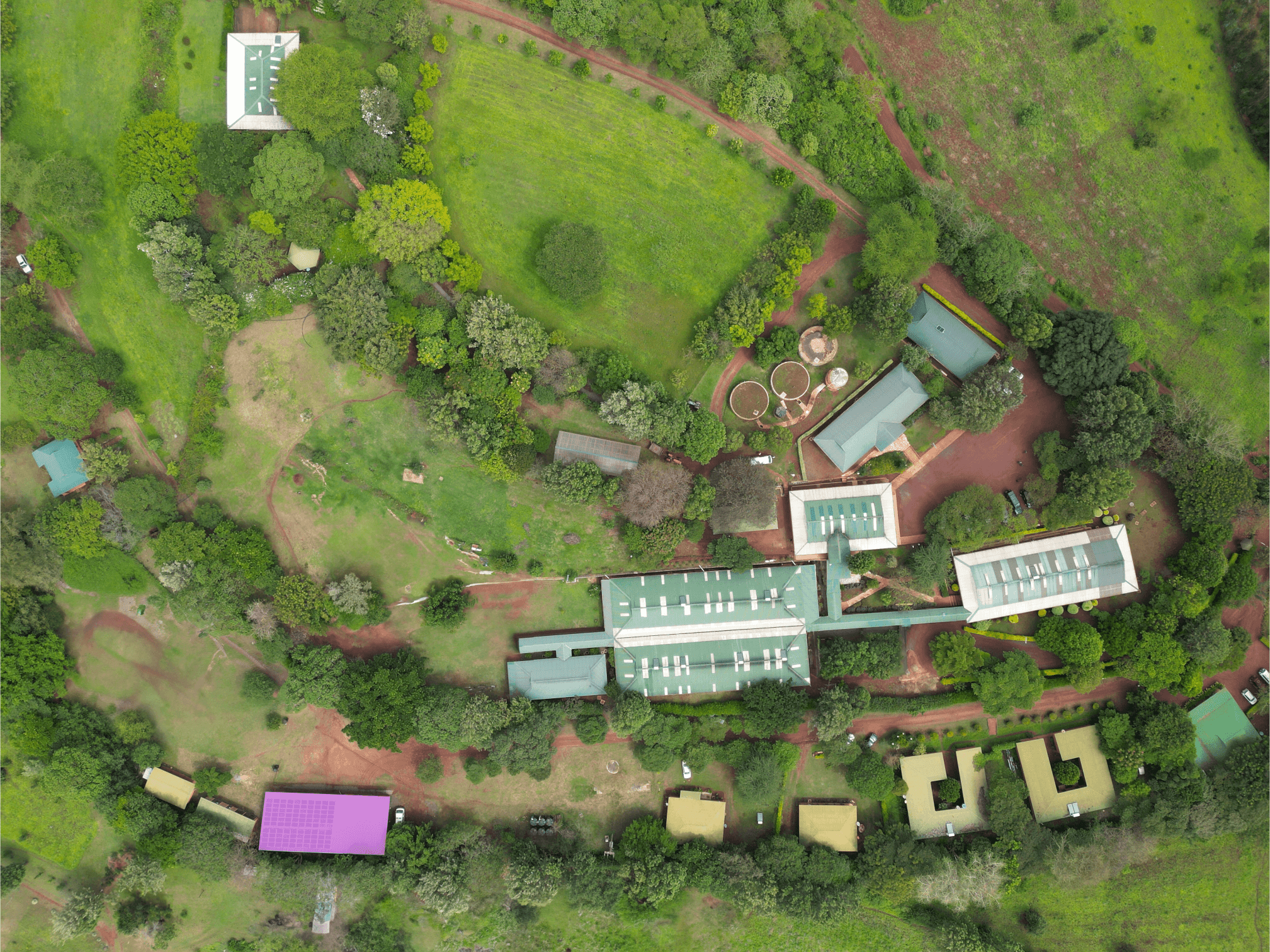
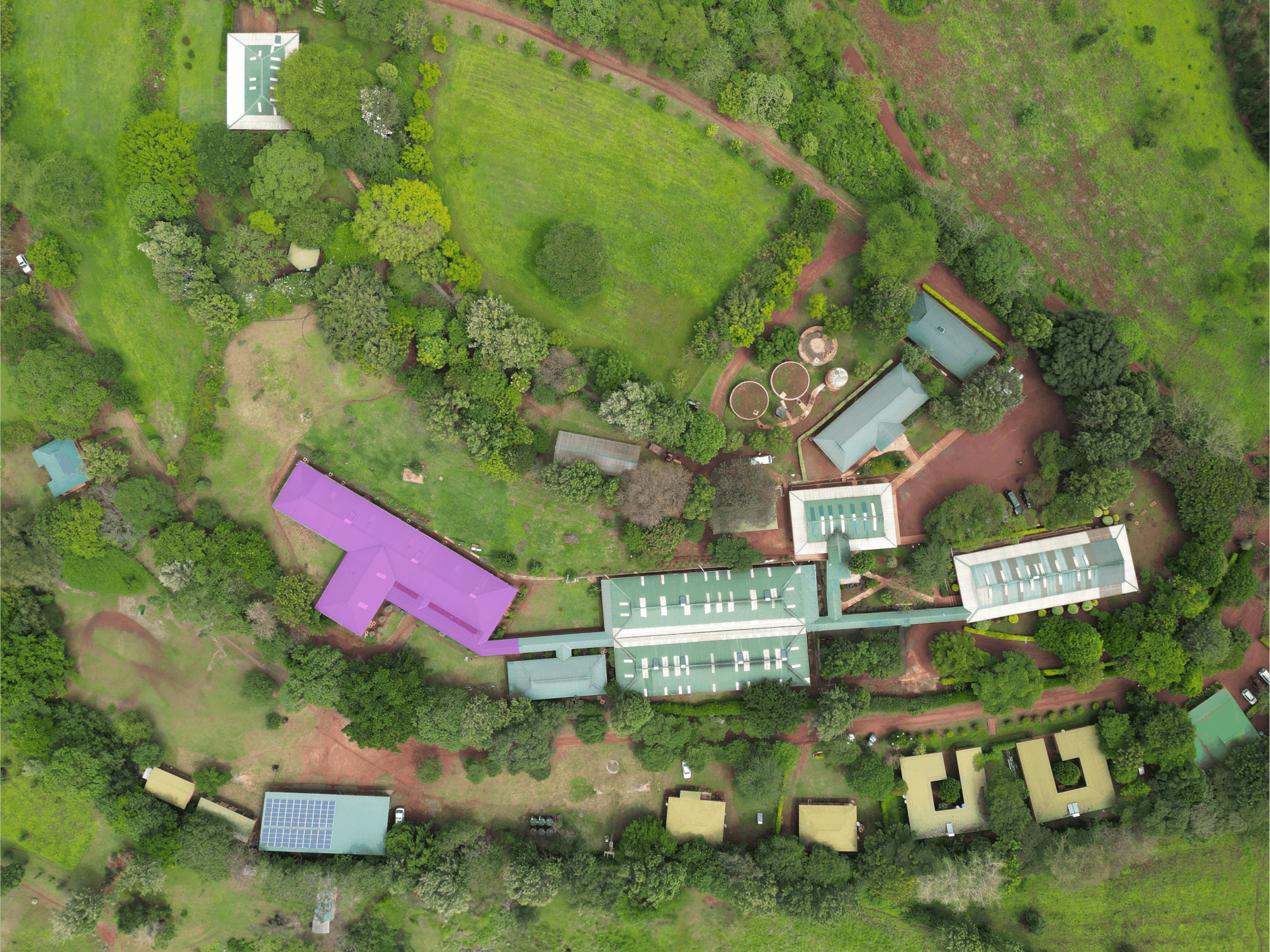
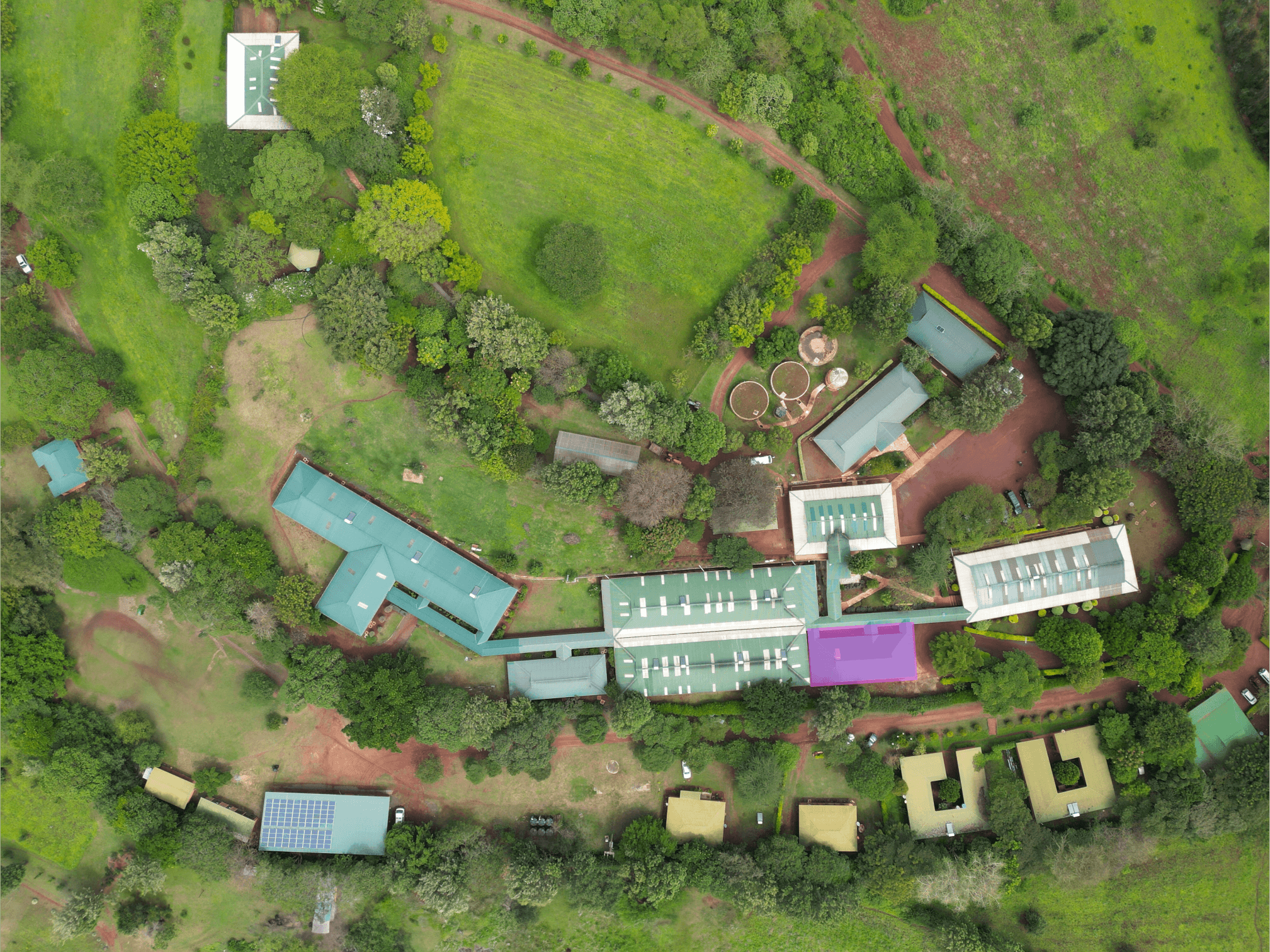
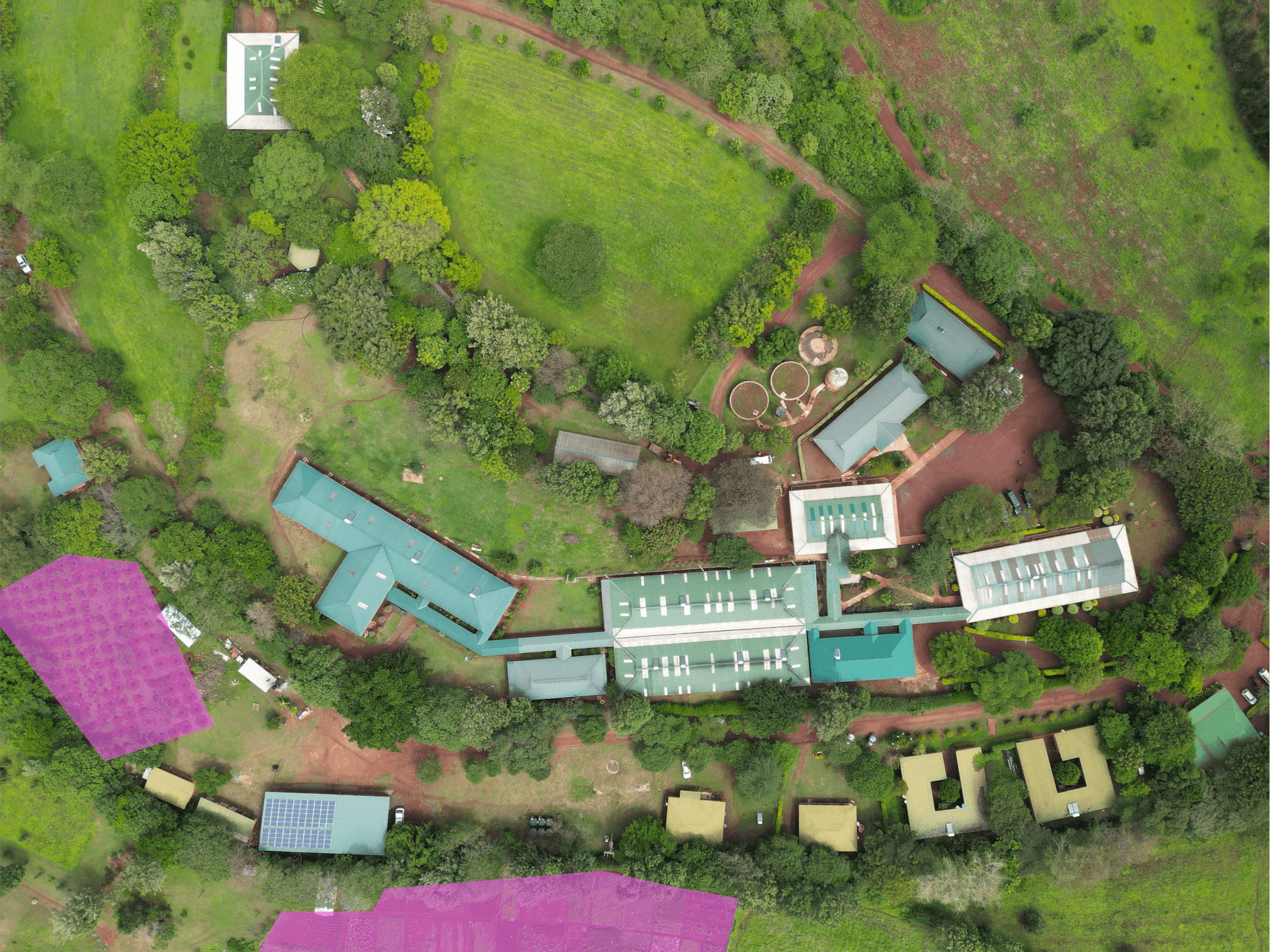
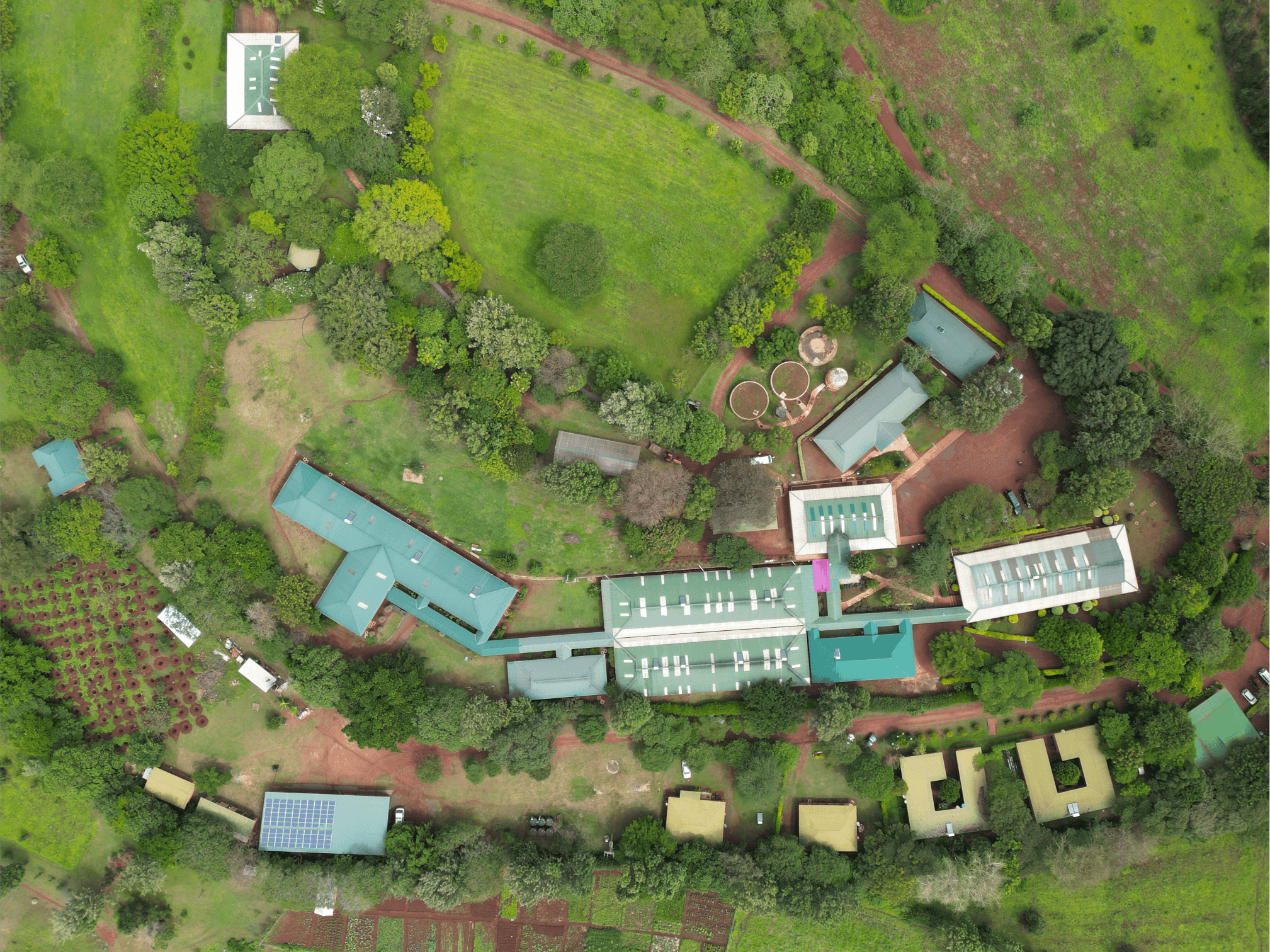
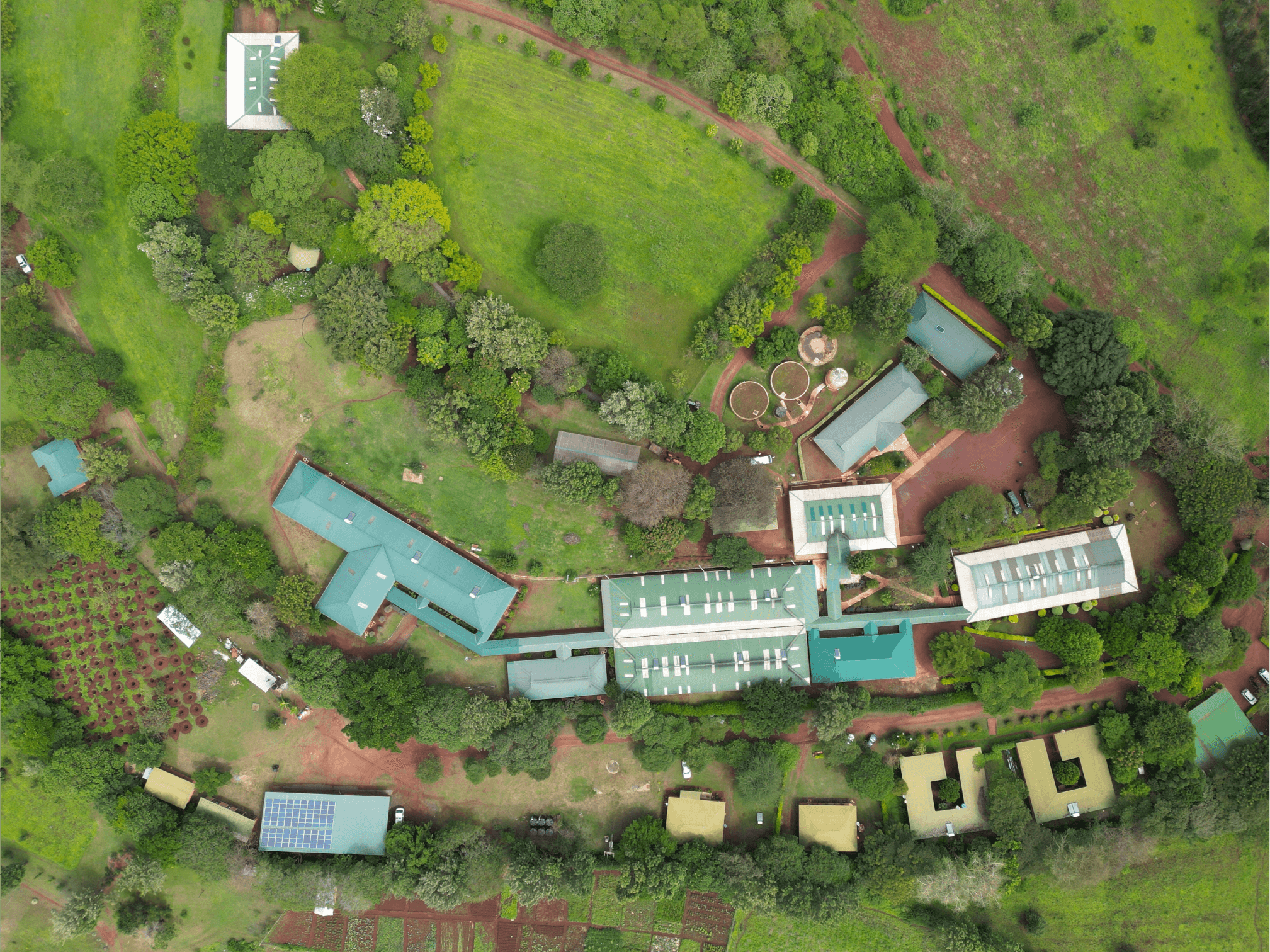
2007 - Site of Future FAME Campus
The founders' decision to build FAME in Karatu, Tanzania was due in large part to the tremendous lack of healthcare in one of Tanzania's most vulnerable and under-resourced rural communities.

The timeline as implemented on FAME's live website, helping visitors understand the organization's 18-year growth journey.
TAKEAWAYS
PAINS
- If a new building or asset is constructed on the campus, I will need to repeat the process. Fortunately, I will be able to re-use the information and date information for the existing assets.
- Using the deconstruction technique with Photoshop is not entirely accurate. For example, some trees, bushes, and other landscaping features were not removed from the drone photo for previous years. Additionally, the replacement imagery for the removed assets does not precisely represent what was there prior. The modifications of the drone photo were meant to be illustrative of how the campus has evolved rather than a 1:1 depiction of what the campus looked like historically.
GAINS
- Photoshop's generative AI feature did a remarkable job at replacing campus assets with plausible top-down imagery for what was there pre-construction.
- Squarespace's carousel feature provided a low barrier to integrating the chronological campus photos and describing each new asset.
- FAME's new "Our Campus" page effectively addresses the need for a visual overview of how the grounds have evolved, providing a bird's eye view of the organization's history. This clarity now allows for additional campus planning, attracting potential donors, and garnering further public awareness.
"To be able to see the progression like this is AMAZING!!! It is a wonderful reminder of how this place came to be - the pace at which we've grown, how different programs and services were prioritized....Just seeing it all from the air (so to speak) grow from an empty piece of farm land to a comprehensive medical campus. Quite powerful!"
- FAME Stakeholder
LASTING IMPACT
ONE YEAR LATER
"I hope you know how much we talk about and share the incredible campus growth map/images that you put together for us!"
- FAME Managing Director
The timeline continues to serve as a powerful tool for FAME's fundraising, stakeholder communications, and public awareness efforts. What began as a design challenge became a lasting asset in FAME's mission to provide healthcare to rural Tanzania.
The project demonstrated how generative AI tools, when applied thoughtfully to real client needs, can create genuinely impactful solutions. Not AI for AI's sake, but AI as a practical tool enabling work that would otherwise be prohibitively time-consuming or technically complex.